I spent the morning watching the Channel 4 coverage of third day of the current Test Match between India and England in Chenai; and the afternoon watching BBC’s broadcast of the Six Nations rugby match between Wales and Ireland in Cardiff. The Indian weather was hot and humid; the Welsh much cooler. Covid has prevented any spectators except for match officials. In Chenai no-one wore masks; in Cardiff they did.
My photographs were all taken from the TV screen. I cropped all images for two reasons, namely to produce the pictures I wanted and to remove broadcast spoiler score information.
There are now many different forms of international cricket requiring different time spans and consequent paces of the game. Traditional Test Cricket ebbs and flows with changes of fortune over five days.
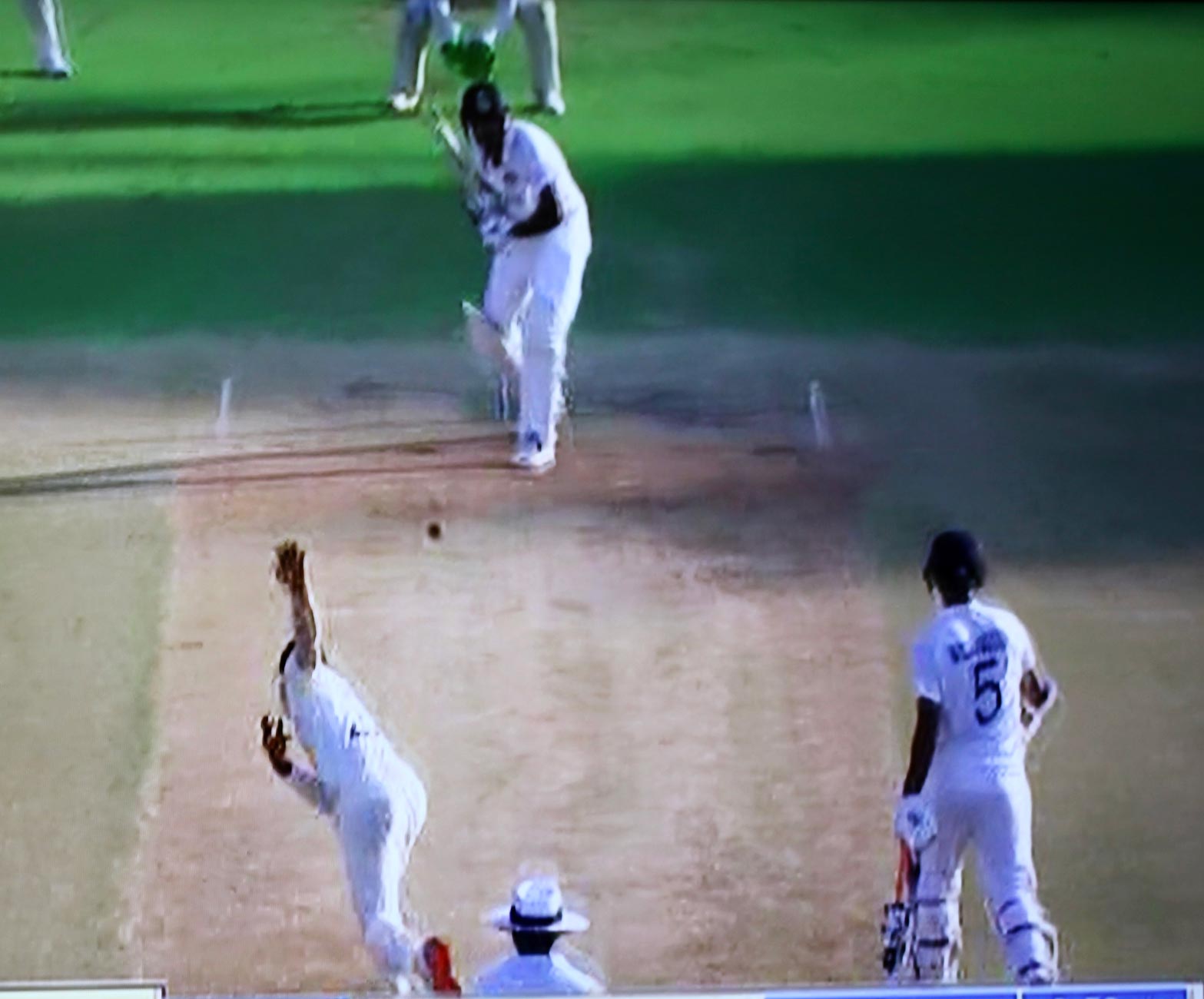
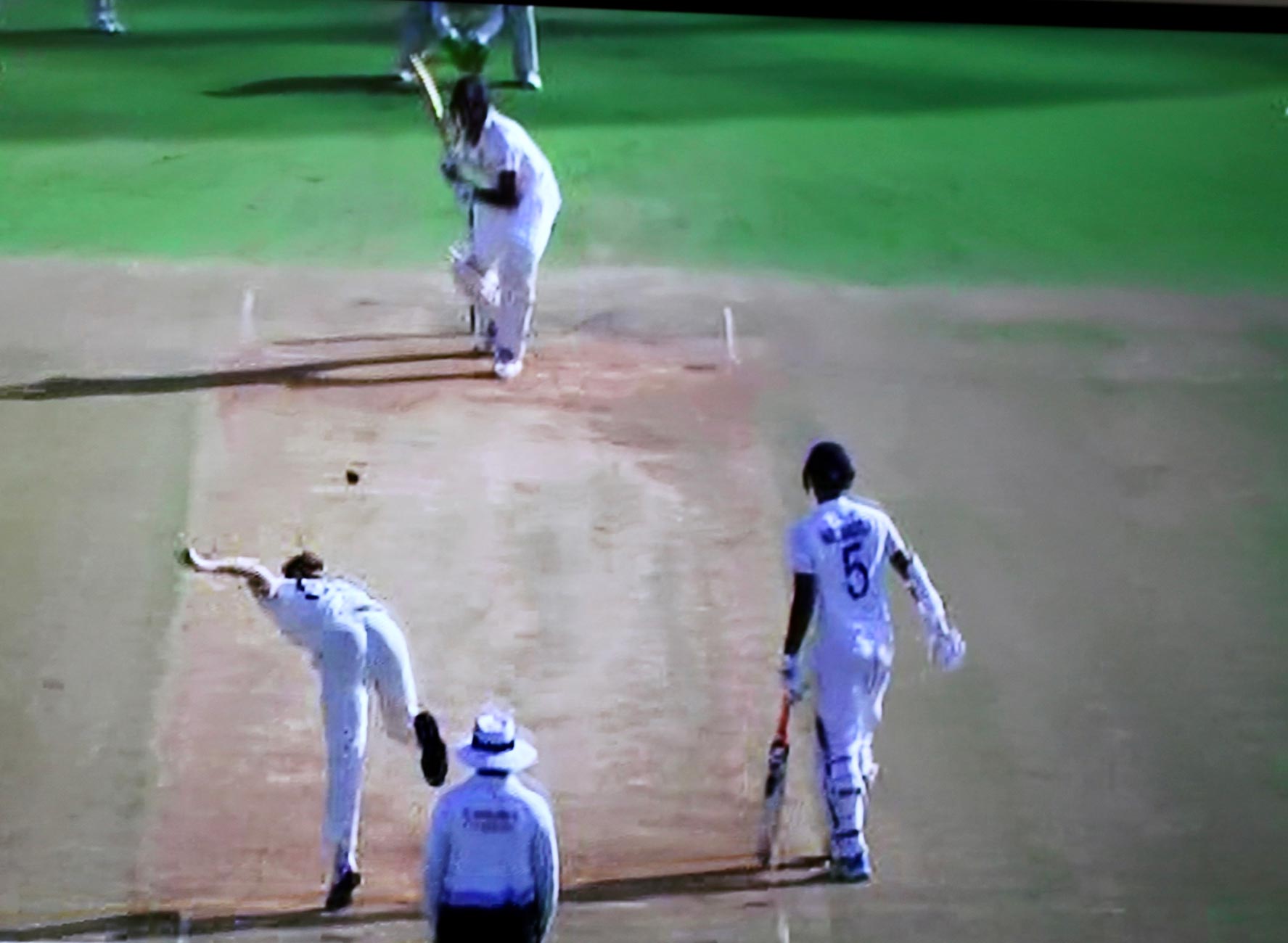
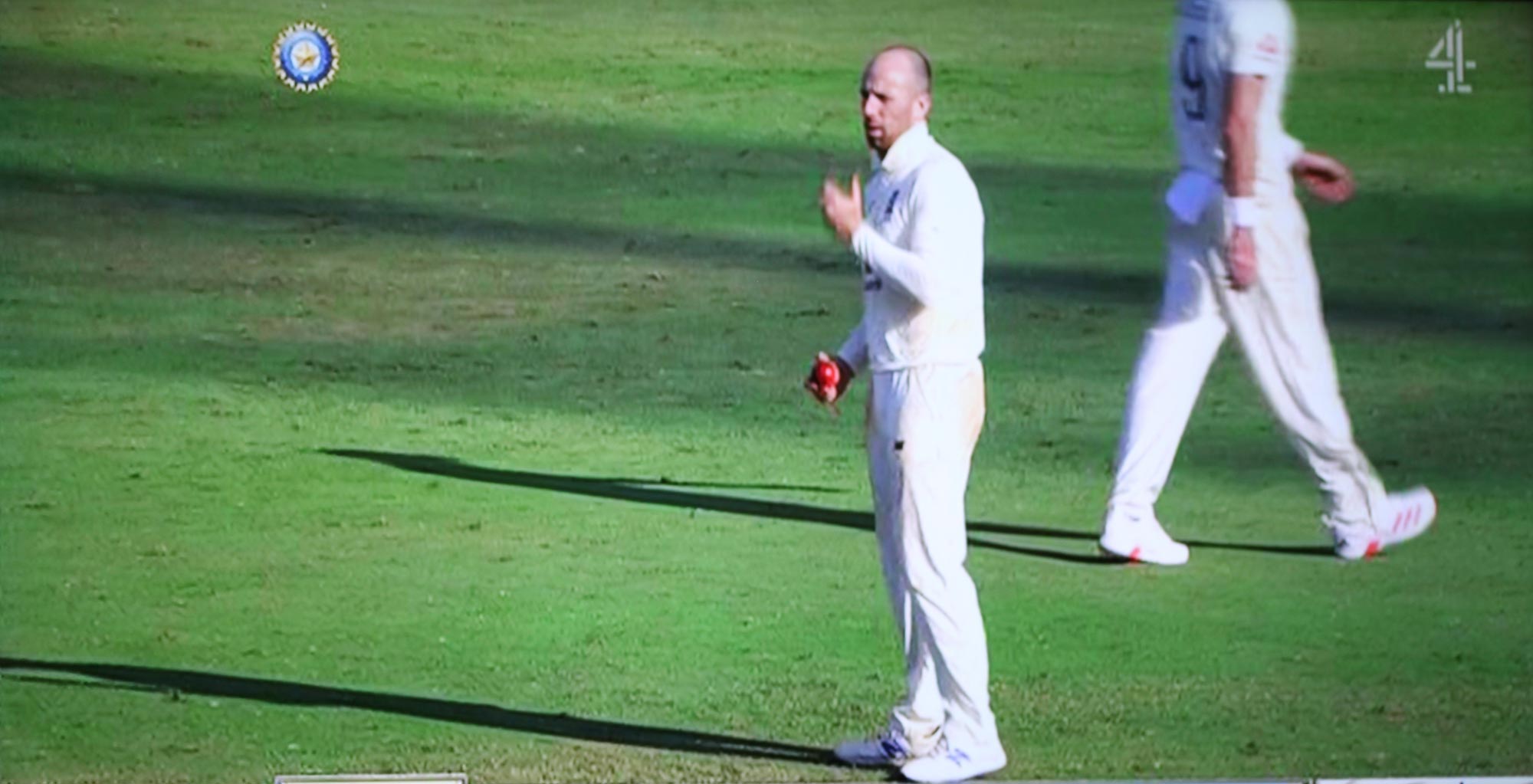
Bowlers bowl to batsmen; one batter receives the ball, the other stands at the bowler’s end ready to run to the other end, crossing with his partner to score one or more runs. The bowler aims to hit the stumps behind the batsman. The umpire in the white coat and hat is there to make decisions about dismissals.
Wicket keepers are equipped with special protective gloves, pads for their legs, and helmets for their faces. Slip fielders beside him have no such protection.

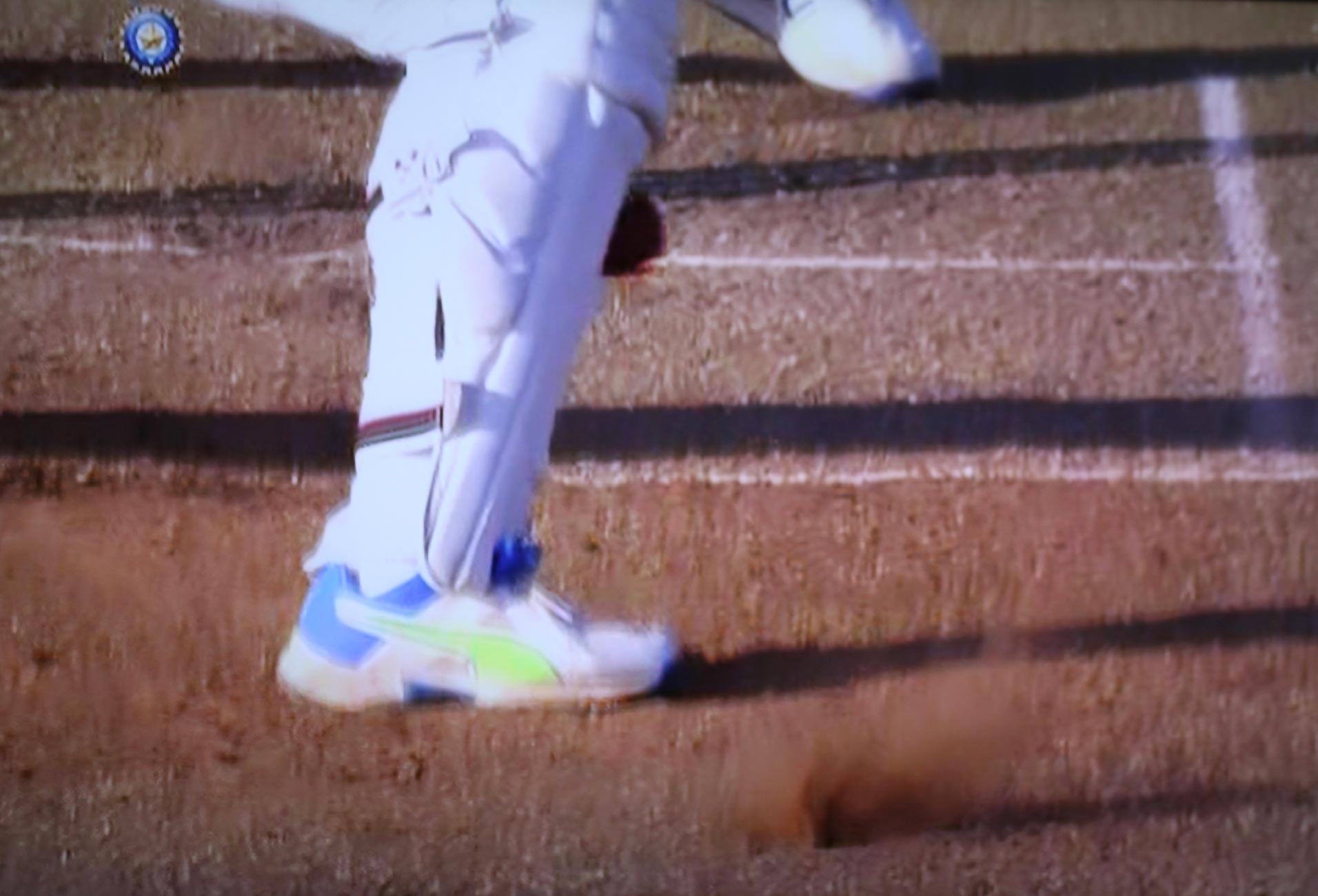
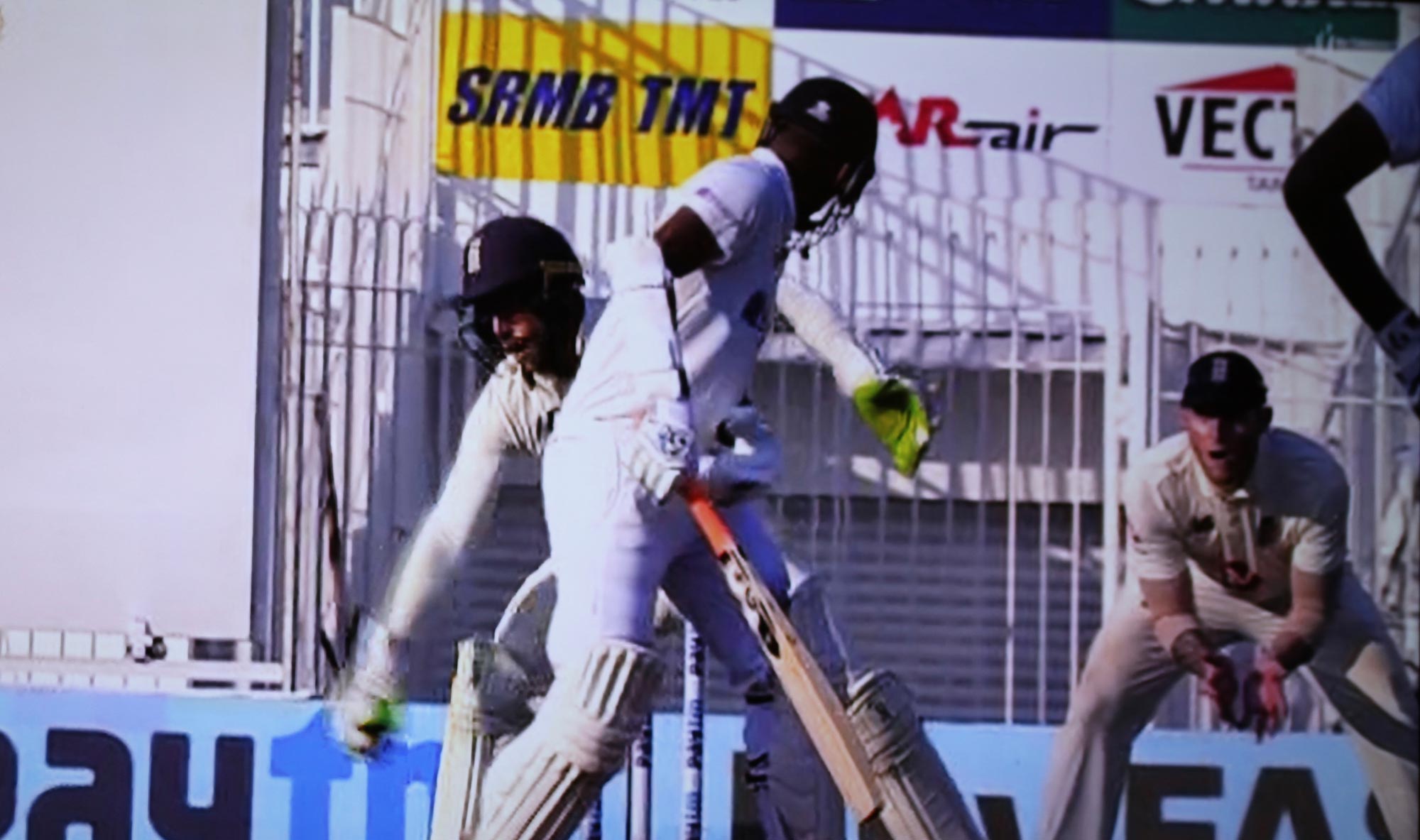
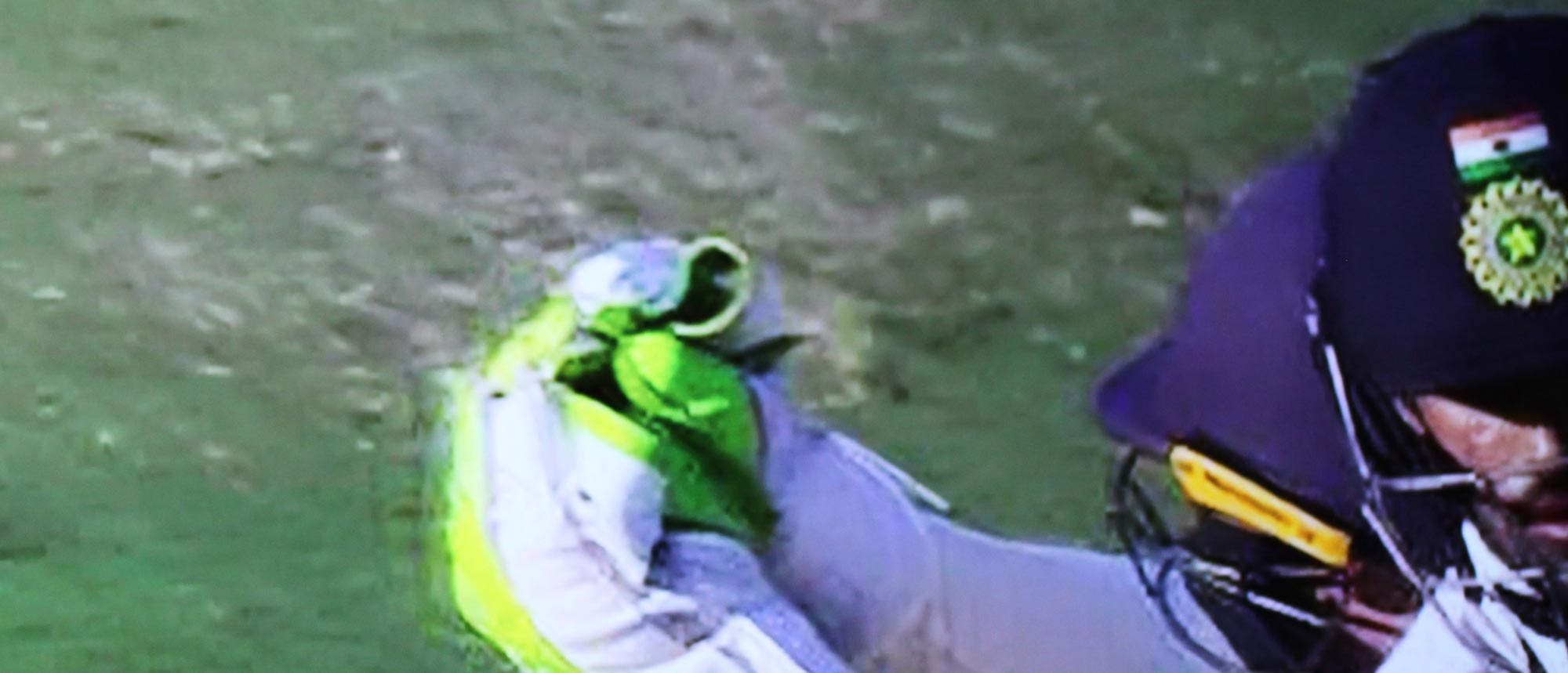
The essence of spin bowling is that the aim is to make the ball change trajectory after hitting the pitch. Throughout the Indian sub-continent the conditions are conducive to this method. Here Jack Leach has bowled ball seen about to land in the first picture; sends up a reddish dust cloud and takes a path behind the batsman’s front leg in the next; eventually ending up in the wicket keeper’s gloves. Had this hit the bat on the way through the man would have been out.
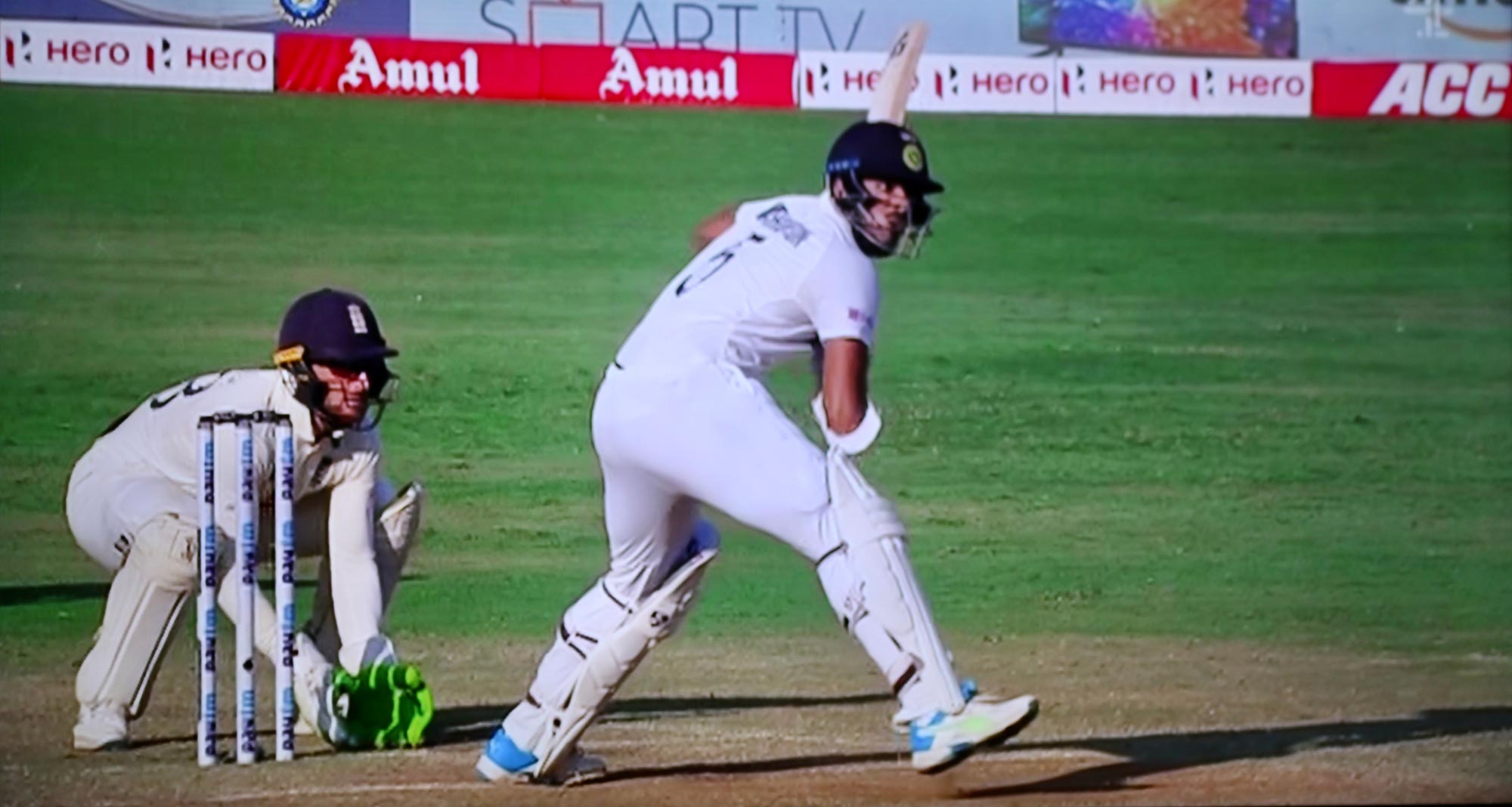
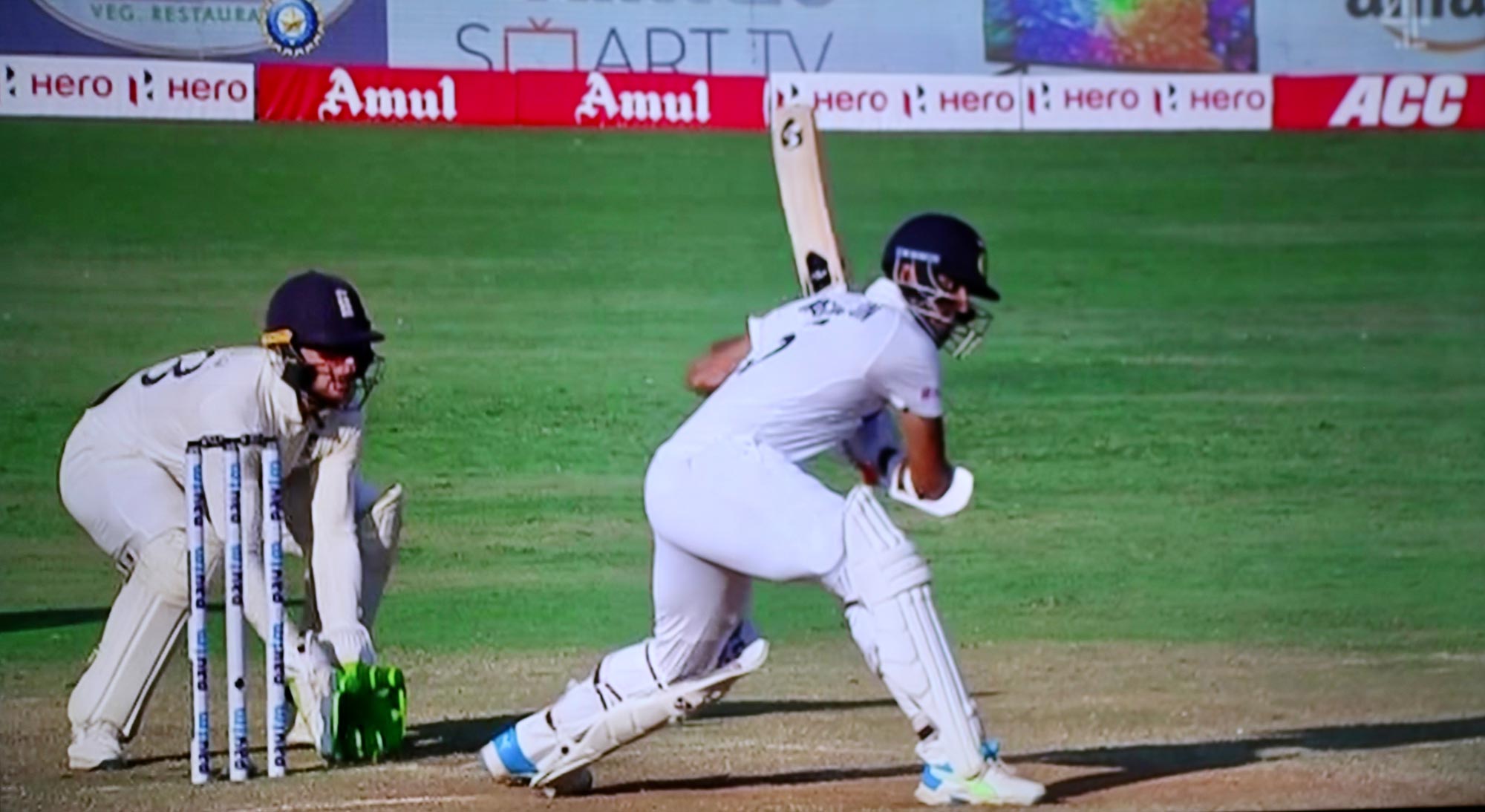
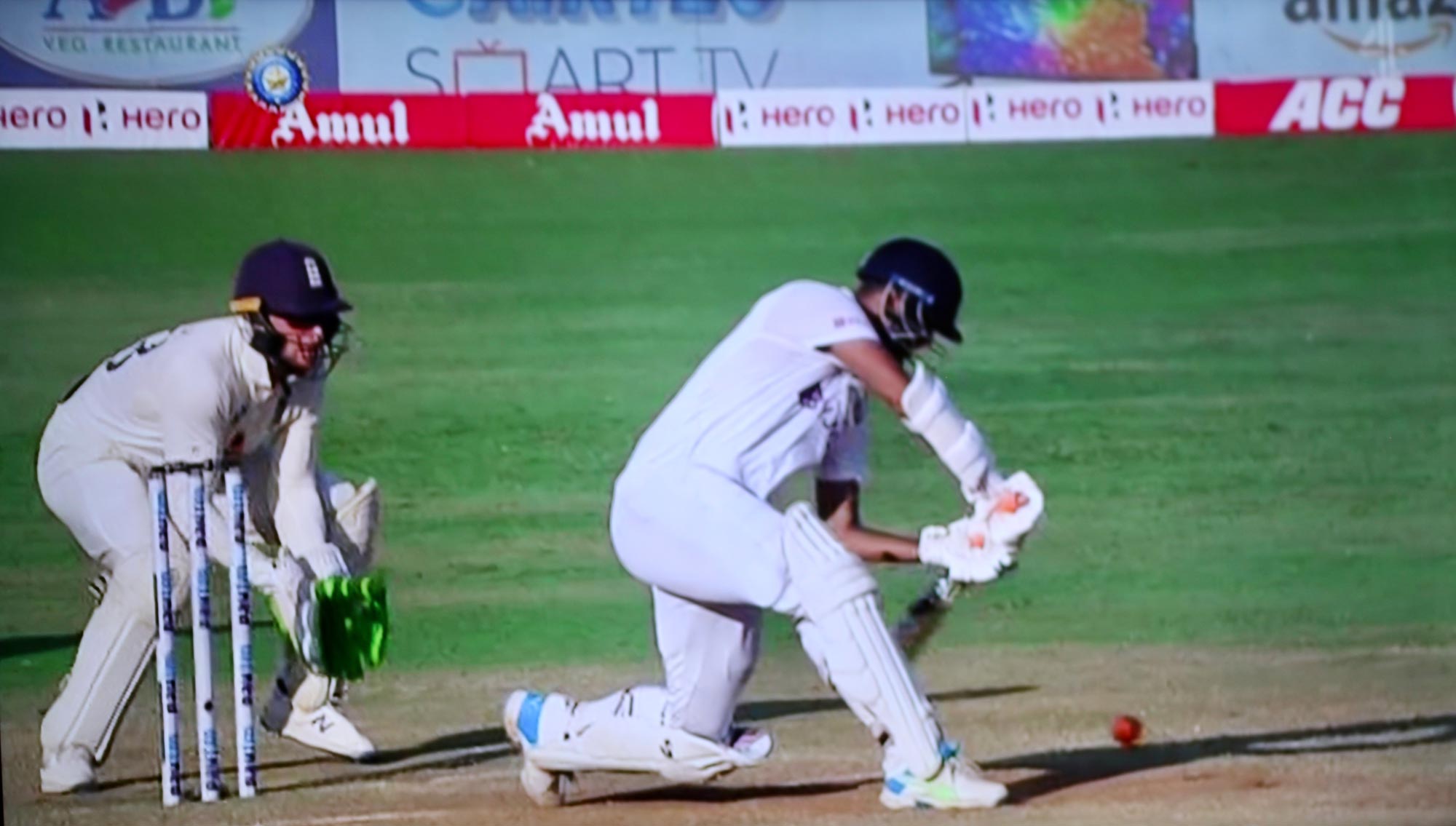
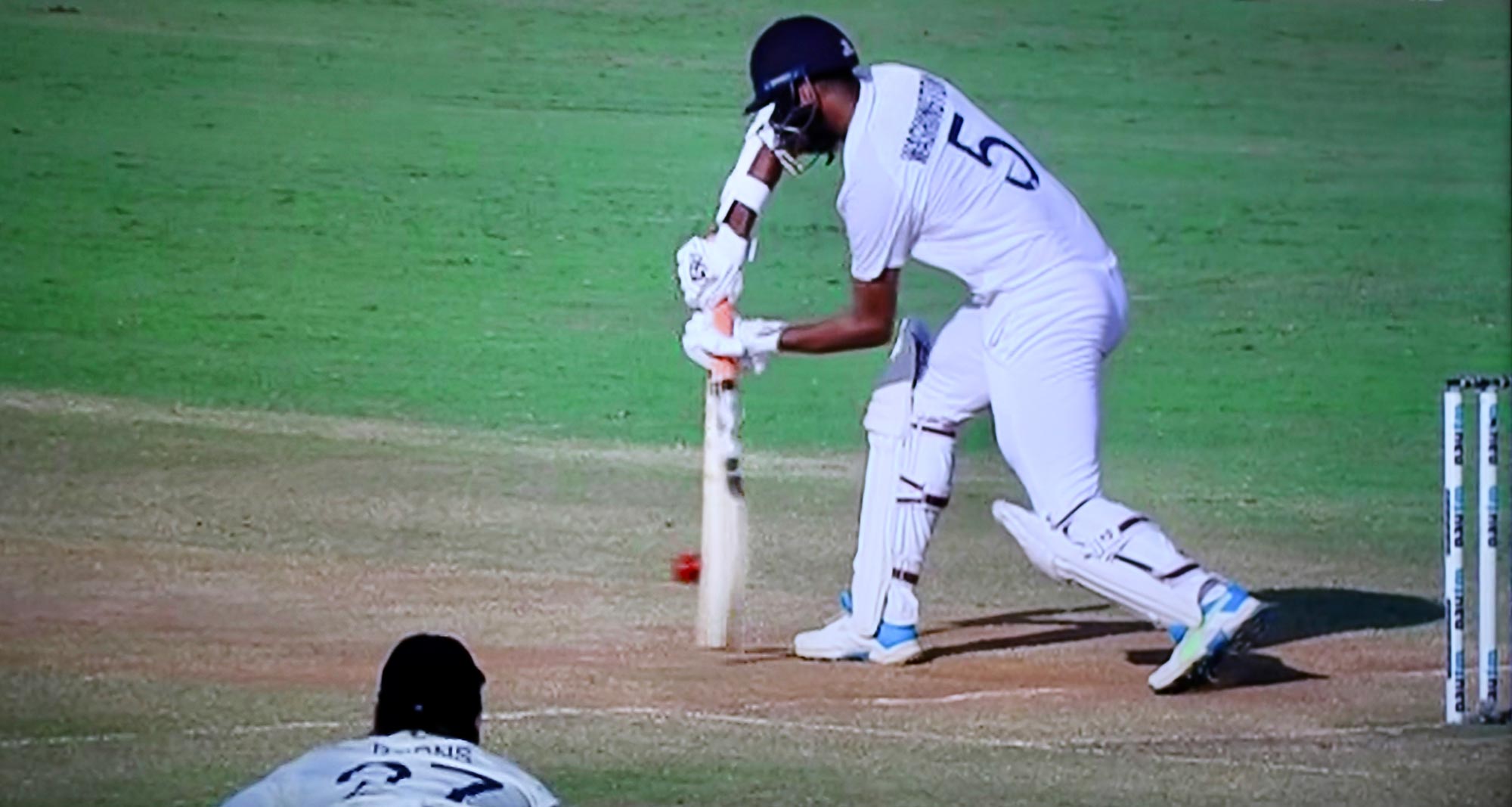
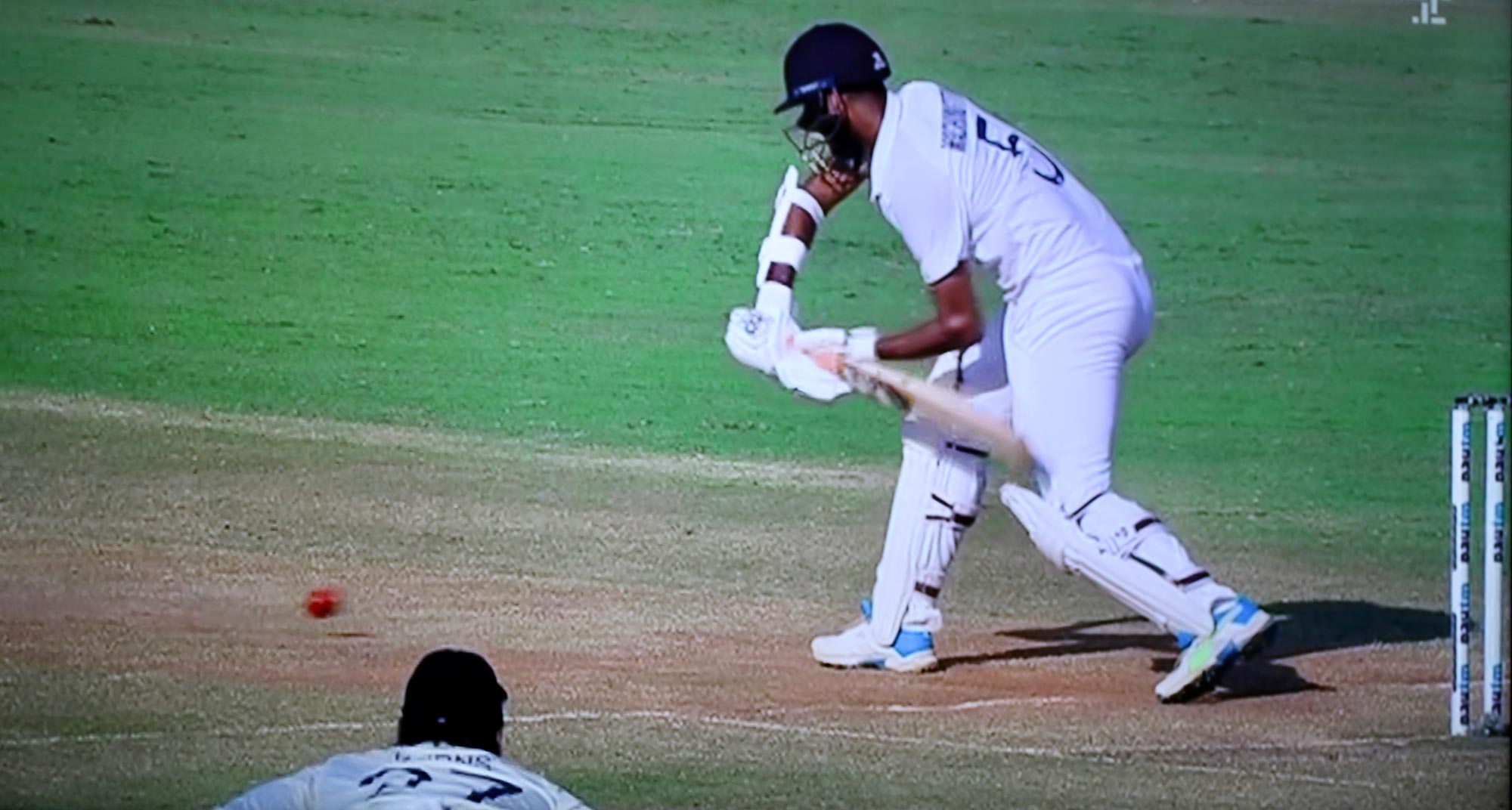
Batting technique is very important.
There are other ways than being bowled (when the stumps are hit by the ball) of being out or losing your wicket. If the ball is caught by a fielder without first hitting the ground the batsman is out, caught.
This is a quite phenomenally athletic dismissal close to the wicket.
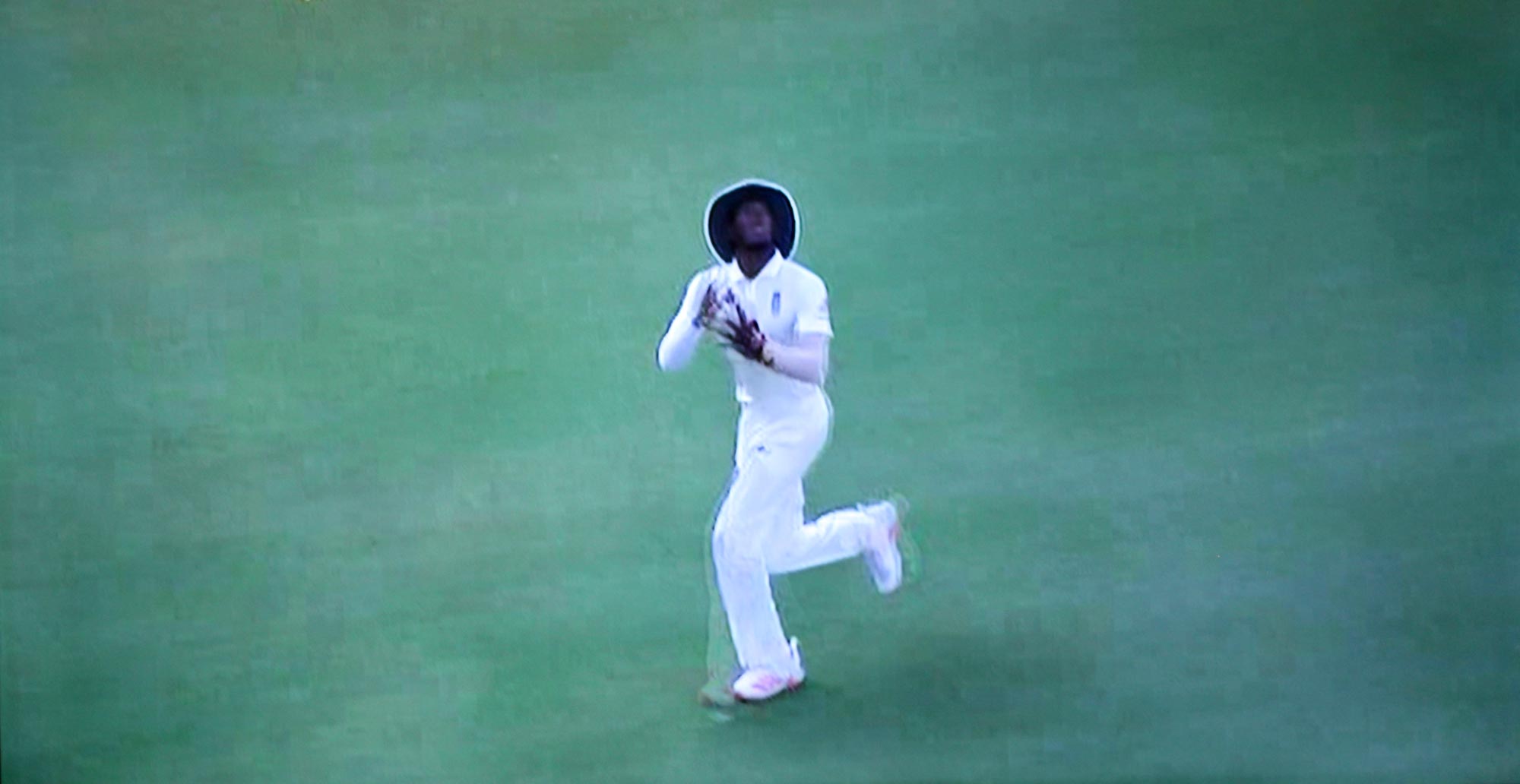
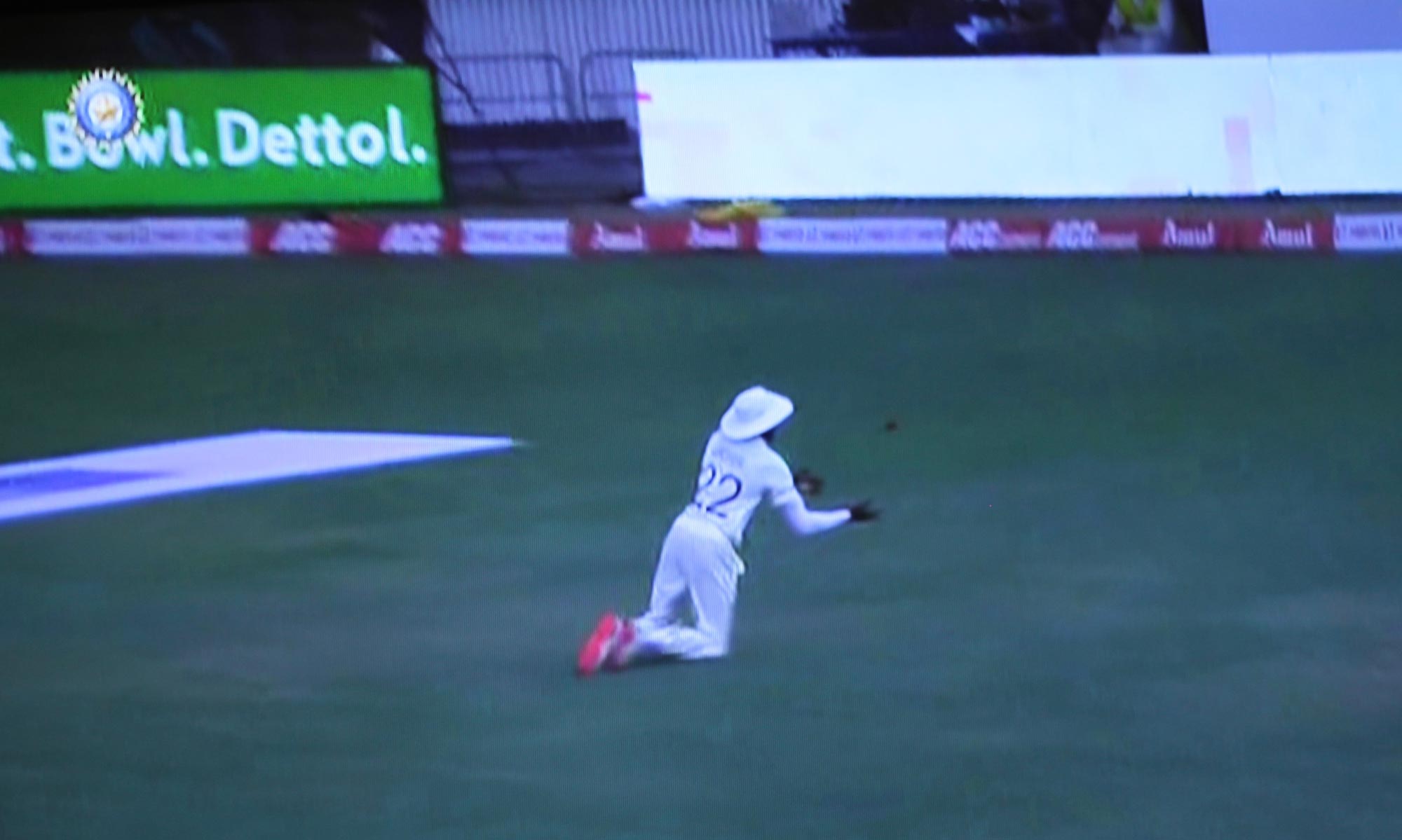
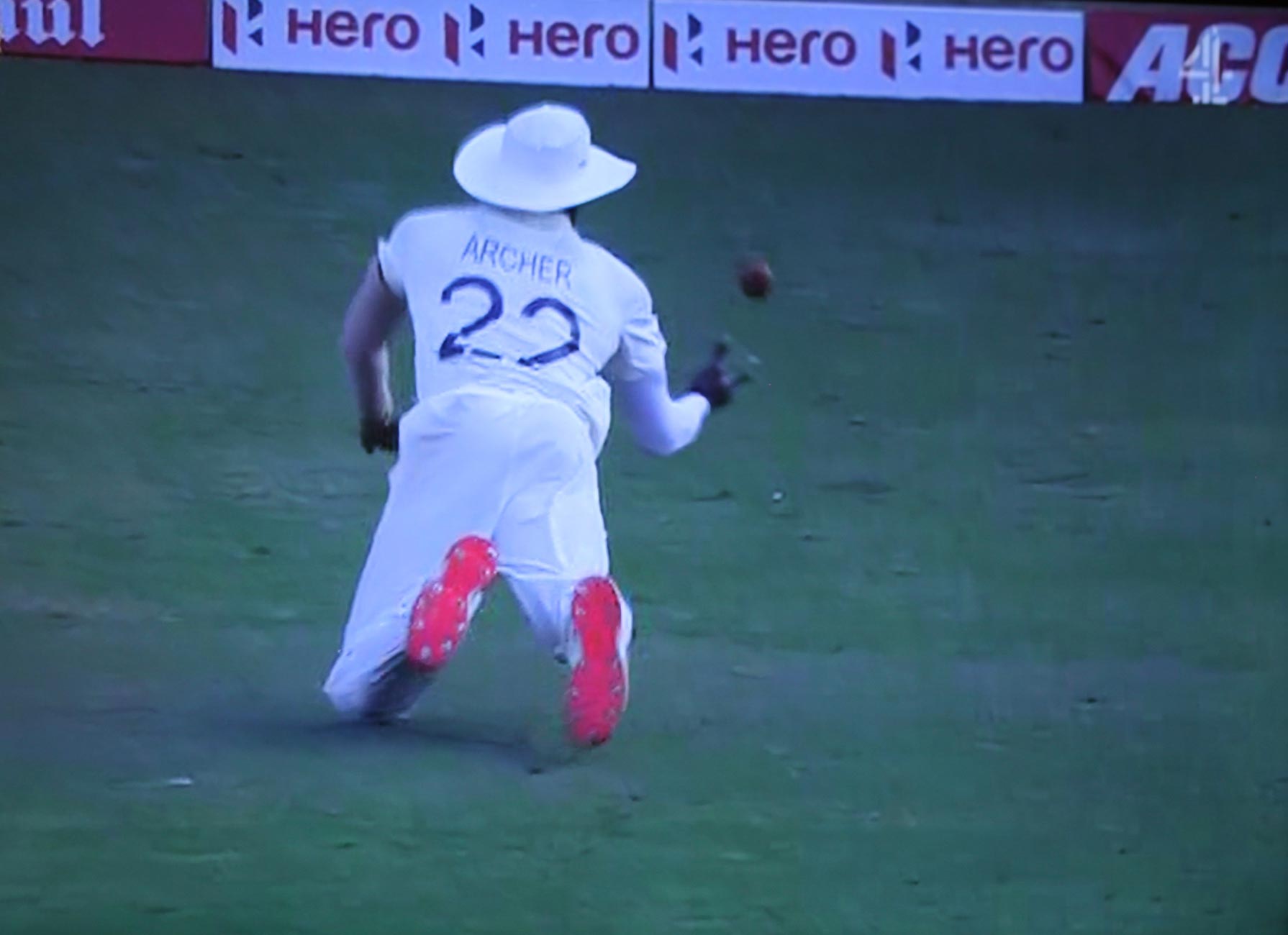

Had this one been held out in the deep field it would have been equally spectacular.

When appealing to the umpire to grant a dismissal, arms are uplifted with a cry of ‘Owzat’, or, as is the modern way shrieks and gesticulations.
We now have a third umpire equipped with the technology to check the on- field umpire’s decision.
Either the fielding captain or the batsman may ask for a review.
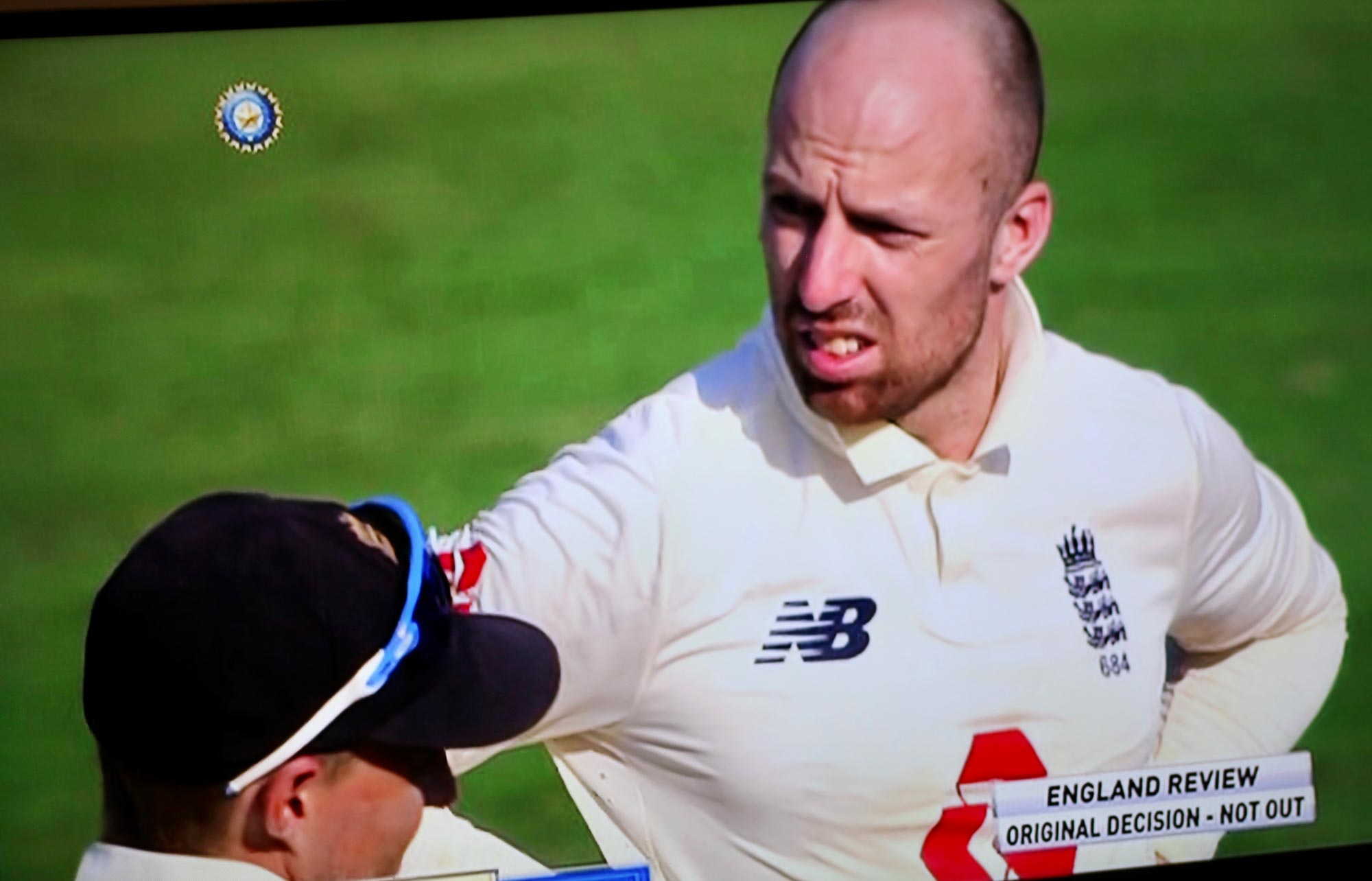
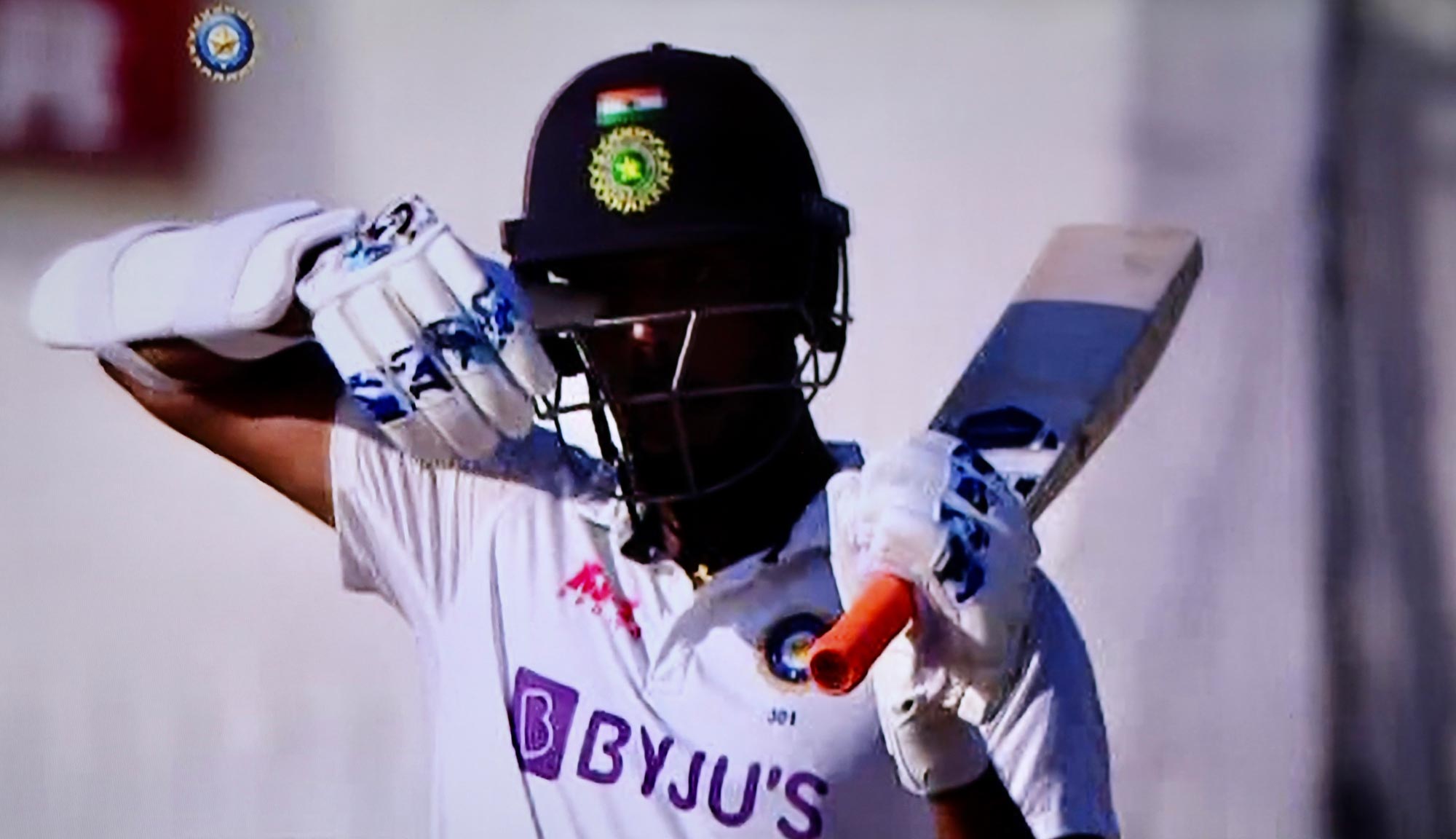

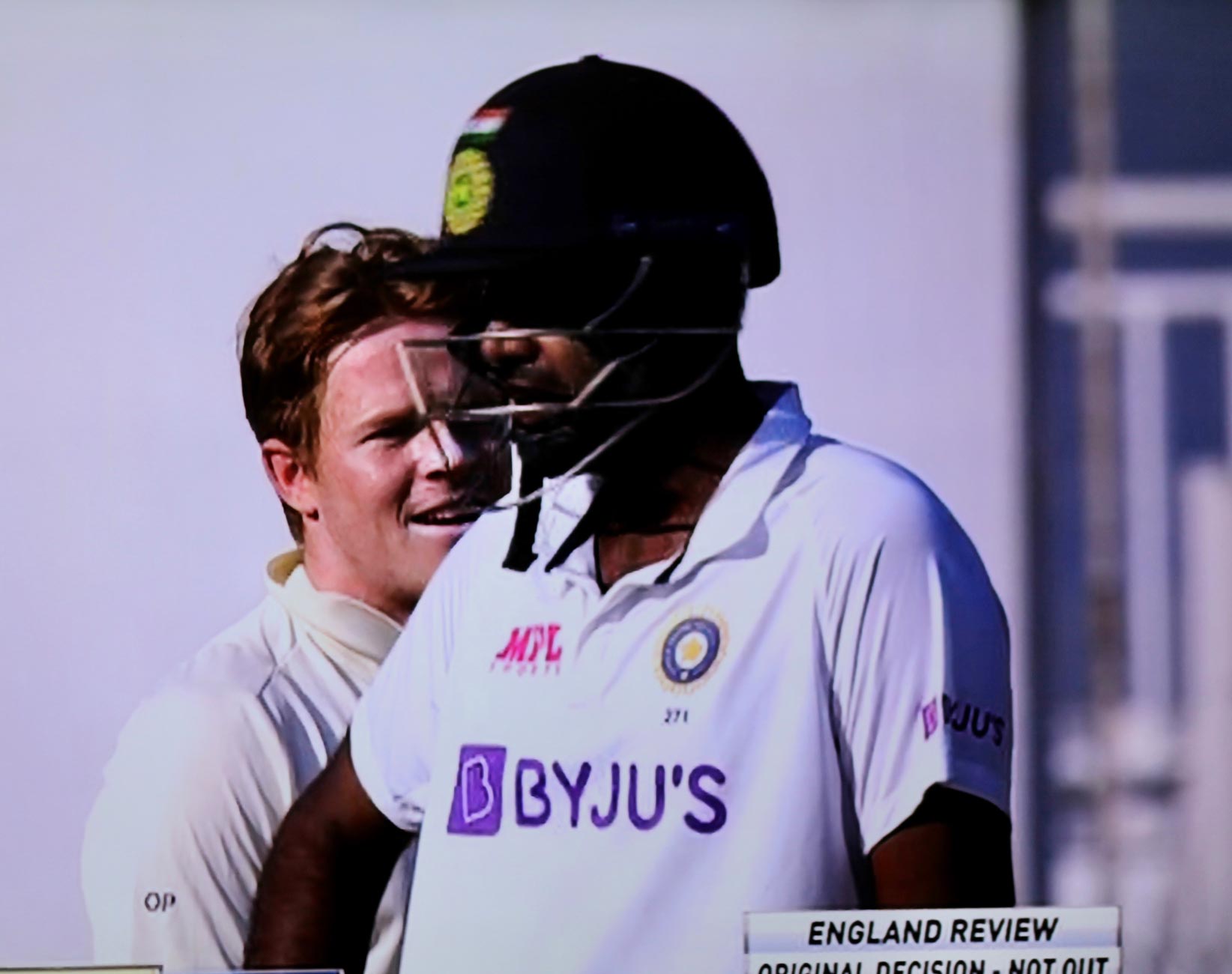
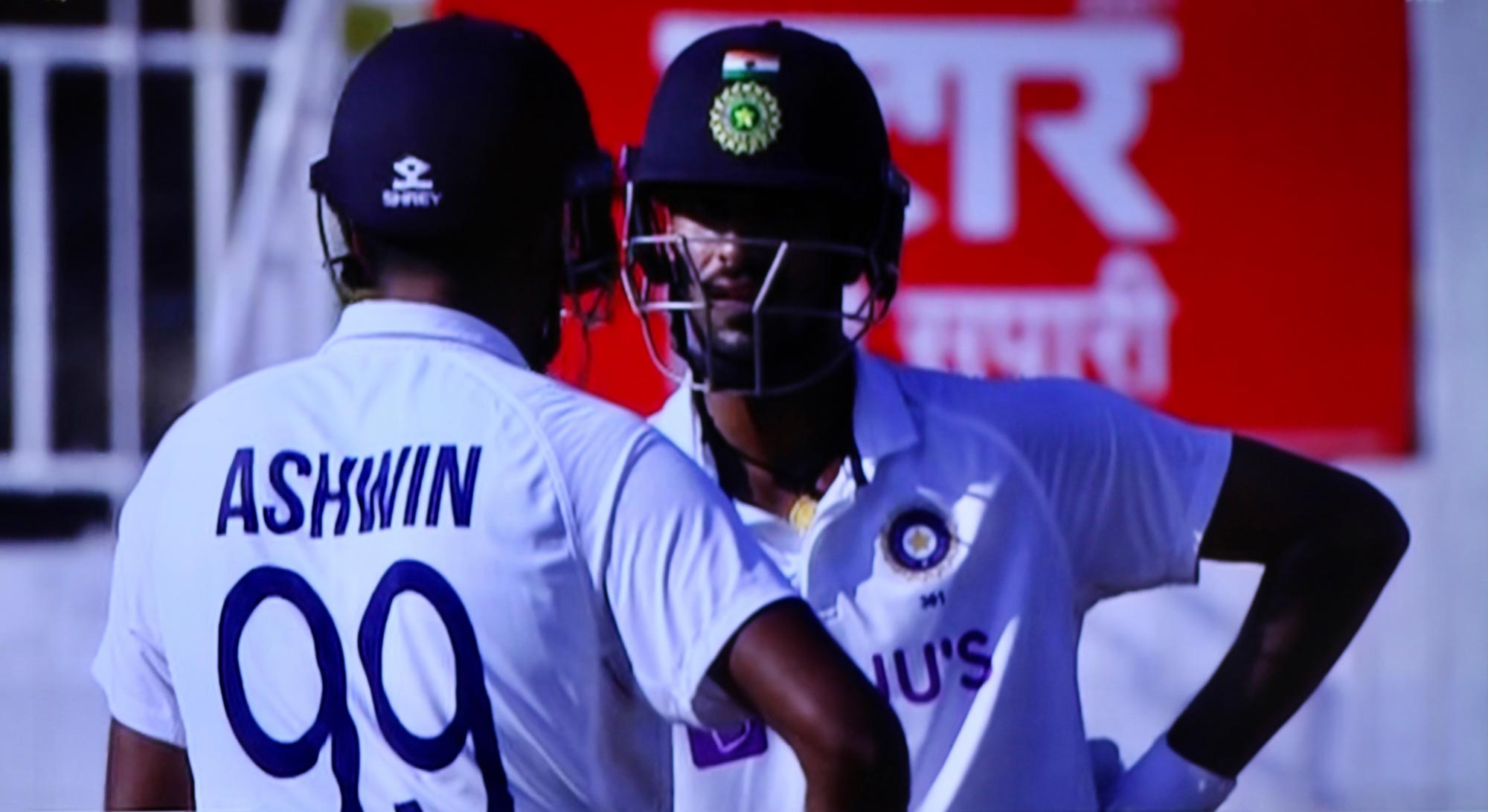

This offers the opportunity for waiting in anguish, for adjusting helmets, discussing tactics, or tightening boot studs.
Here are views which aid the third umpire’s deliberations. The second picture tracks the anticipated path of the ball in order to estimate whether it would have hit the stumps.
Batsmens’ team mates watch keenly from the otherwise empty stands.
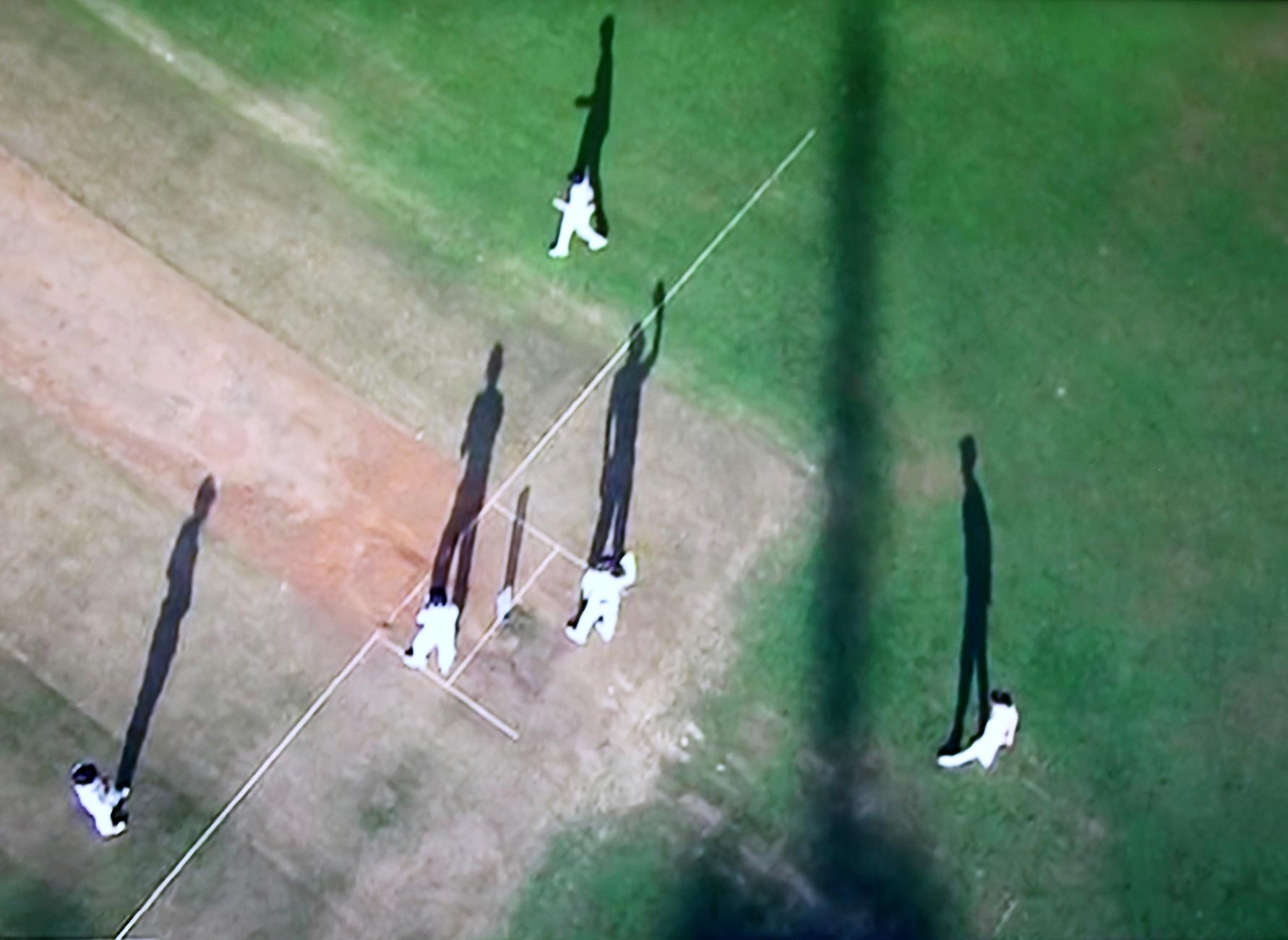

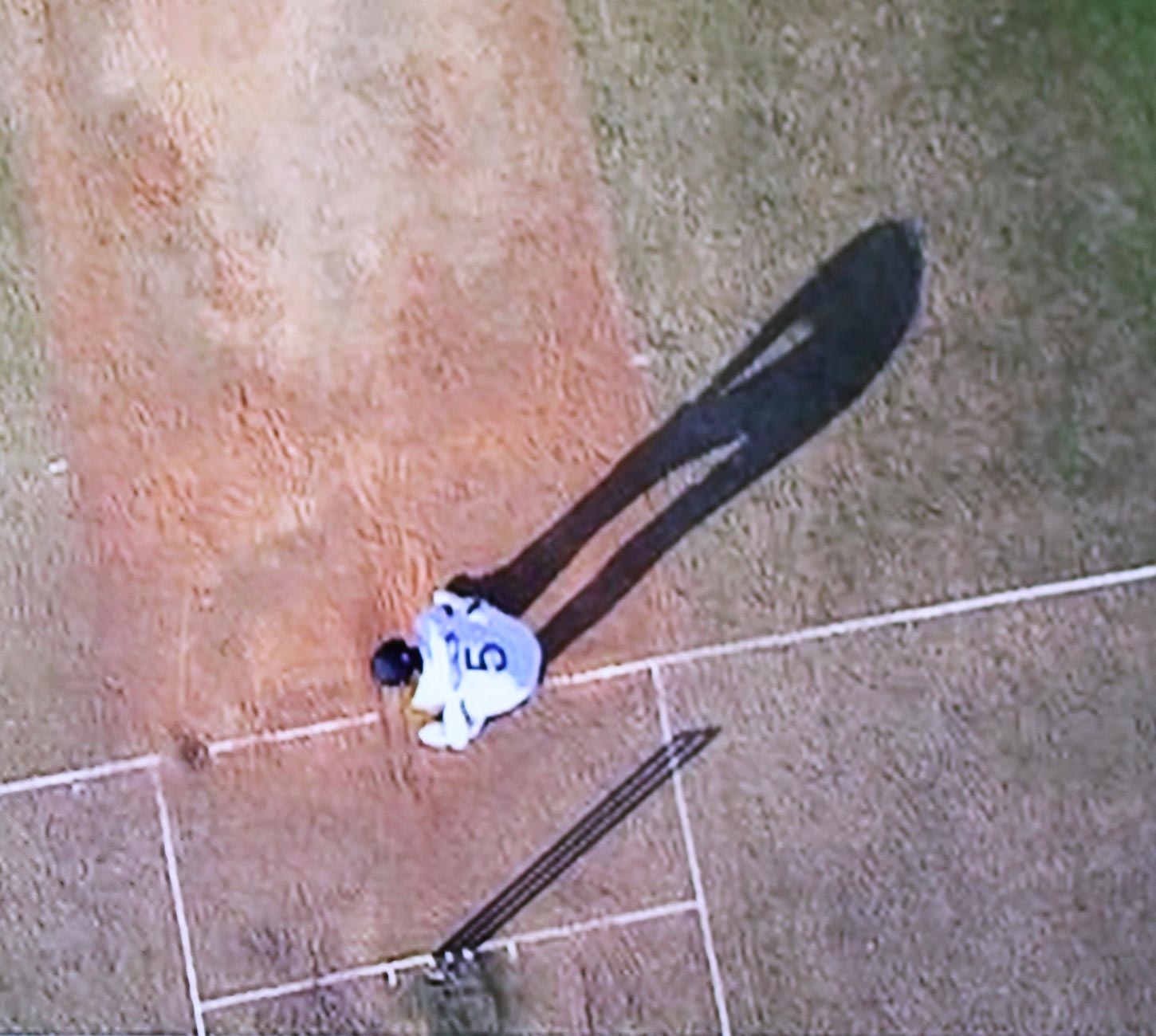
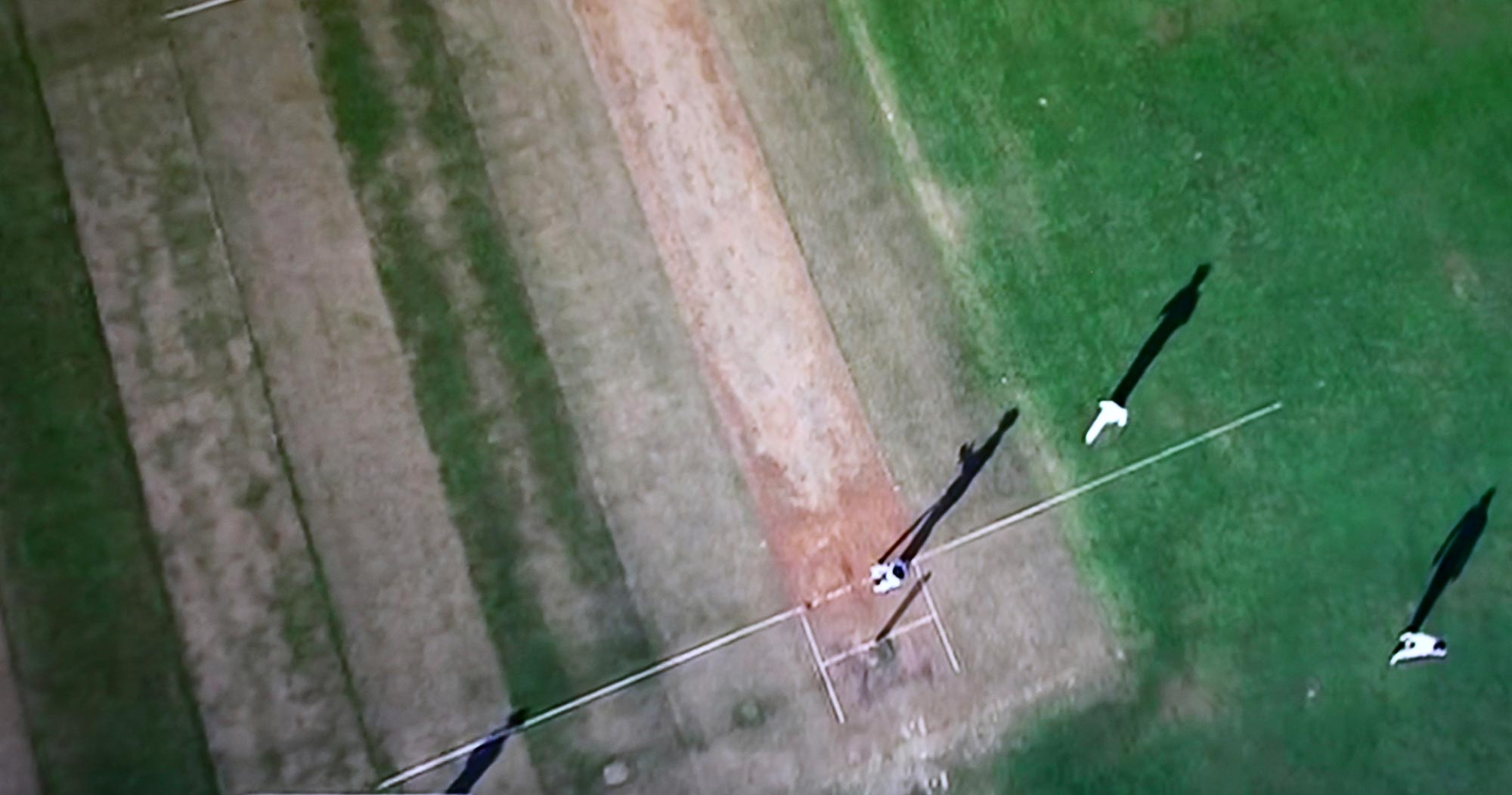
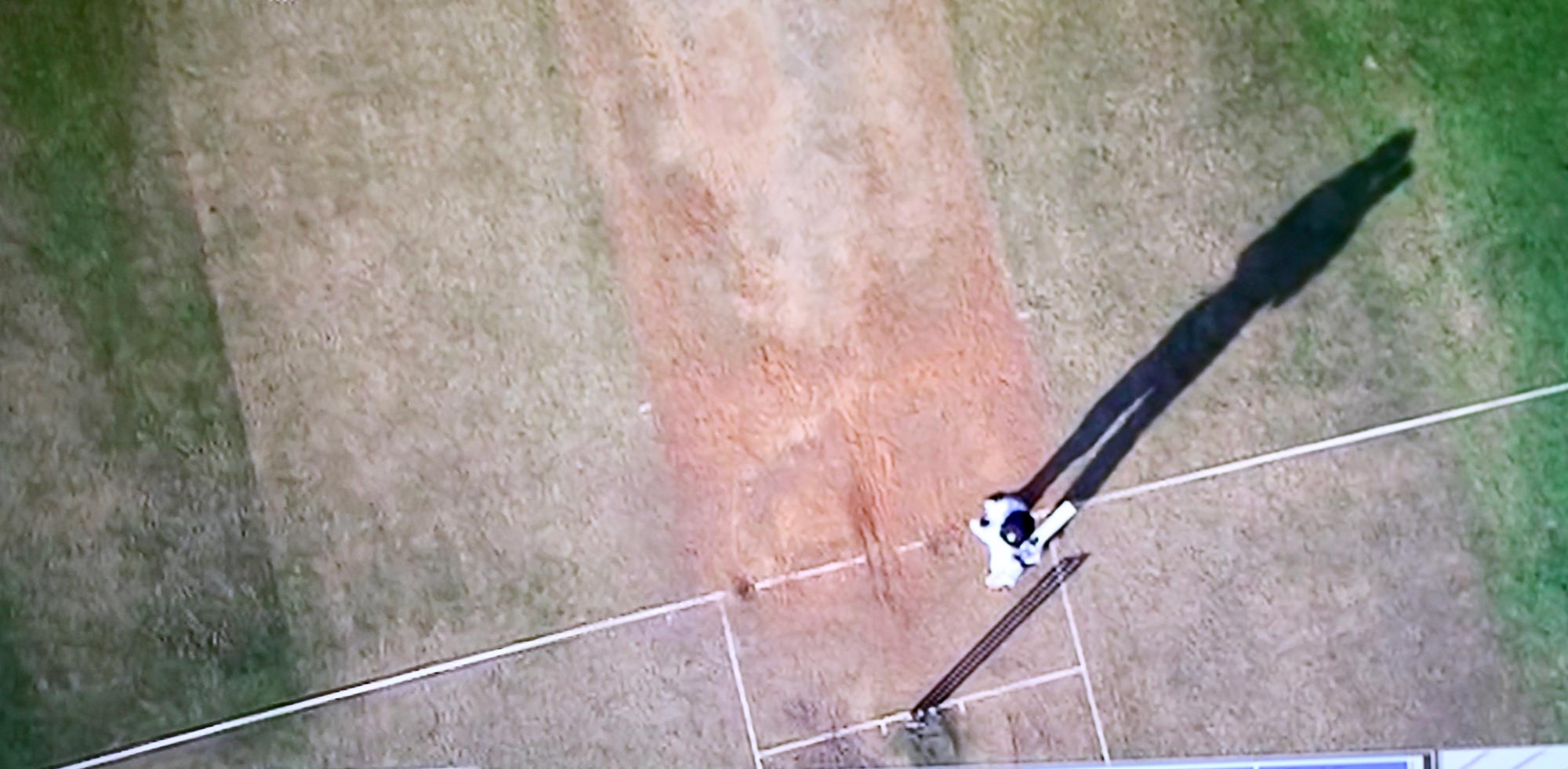
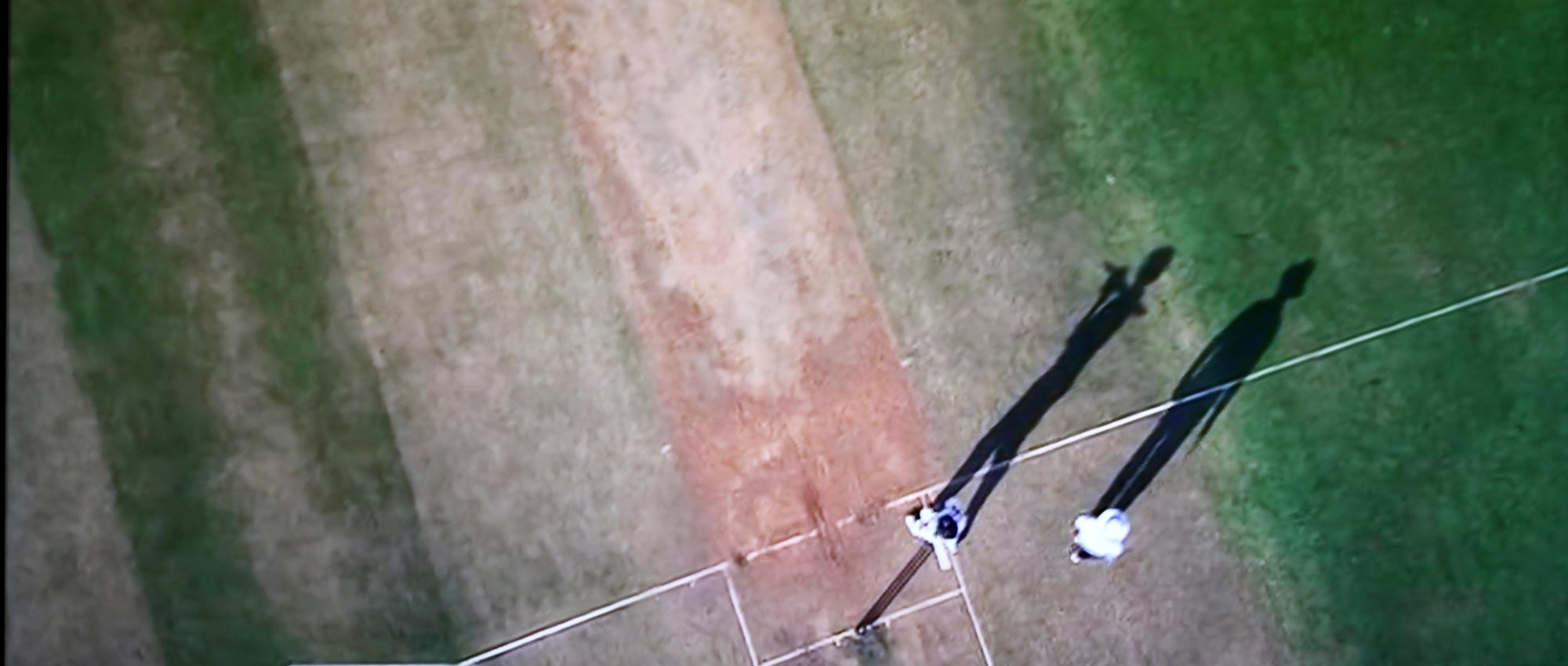
As the evening gradually draws to a close, long shadows have a game of their own.
I have become so carried away with trying to explain some of the aspects of our summer game that I have no time to do the same for the rugby. This will follow tomorrow.
This evening we dined on thick bacon chunks, flavoursome pork chipolatas, piquant cauliflower cheese, chestnut mushrooms, creamy mashed potatoes, crunchy carrots and tender cabbage. The Culinary Queen finished the Sauvignon Blanc and I finished the Macon.
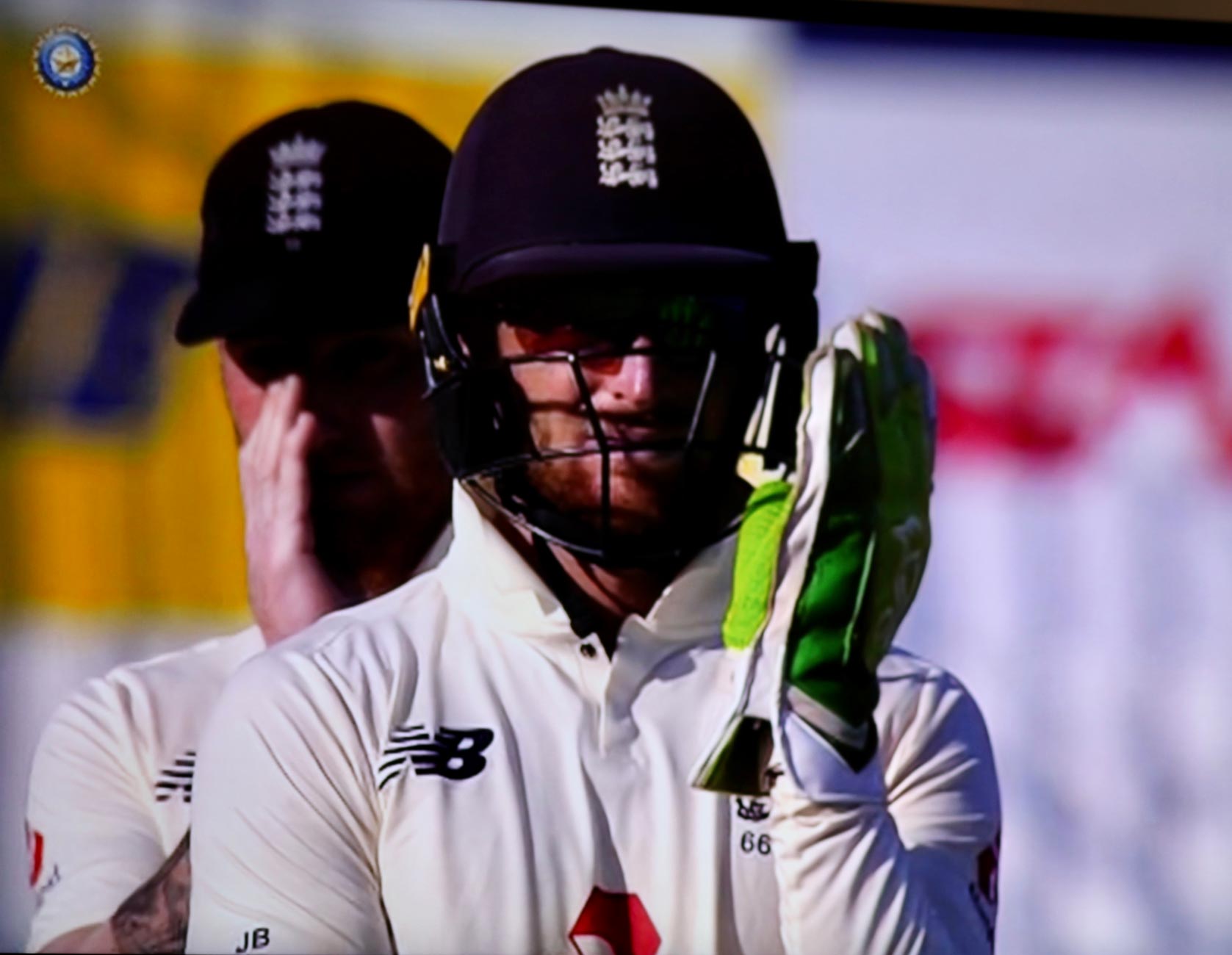

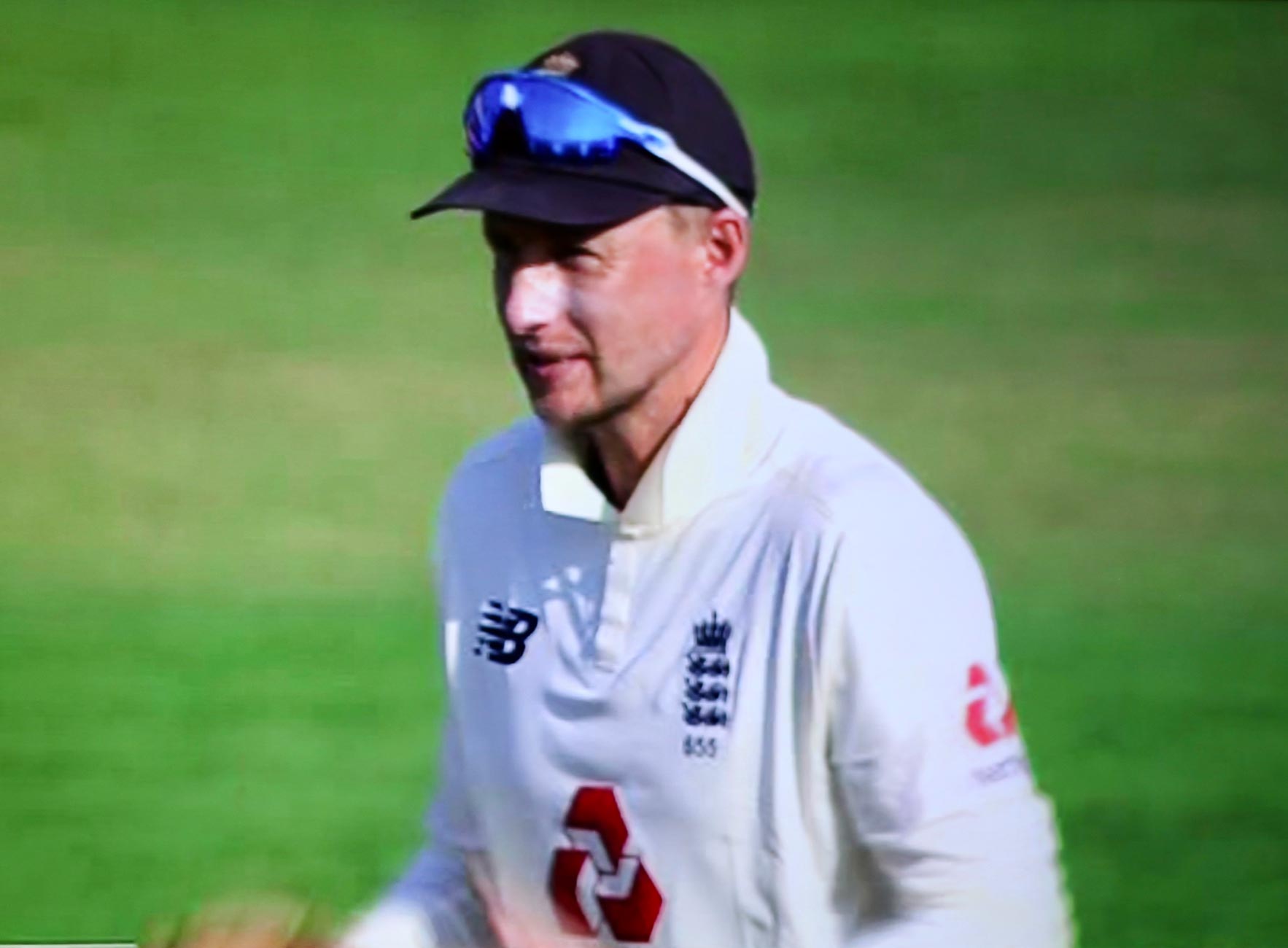
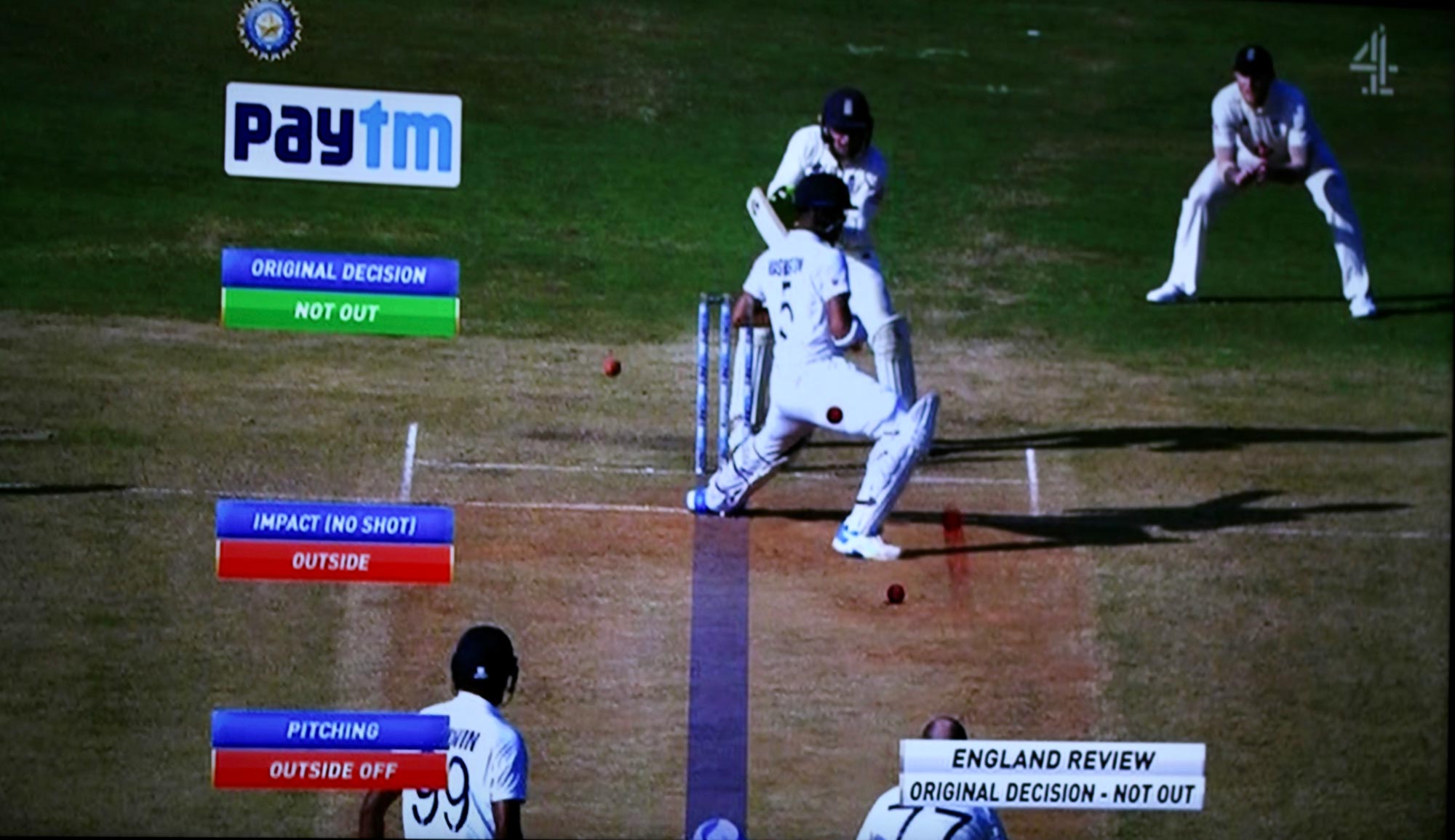
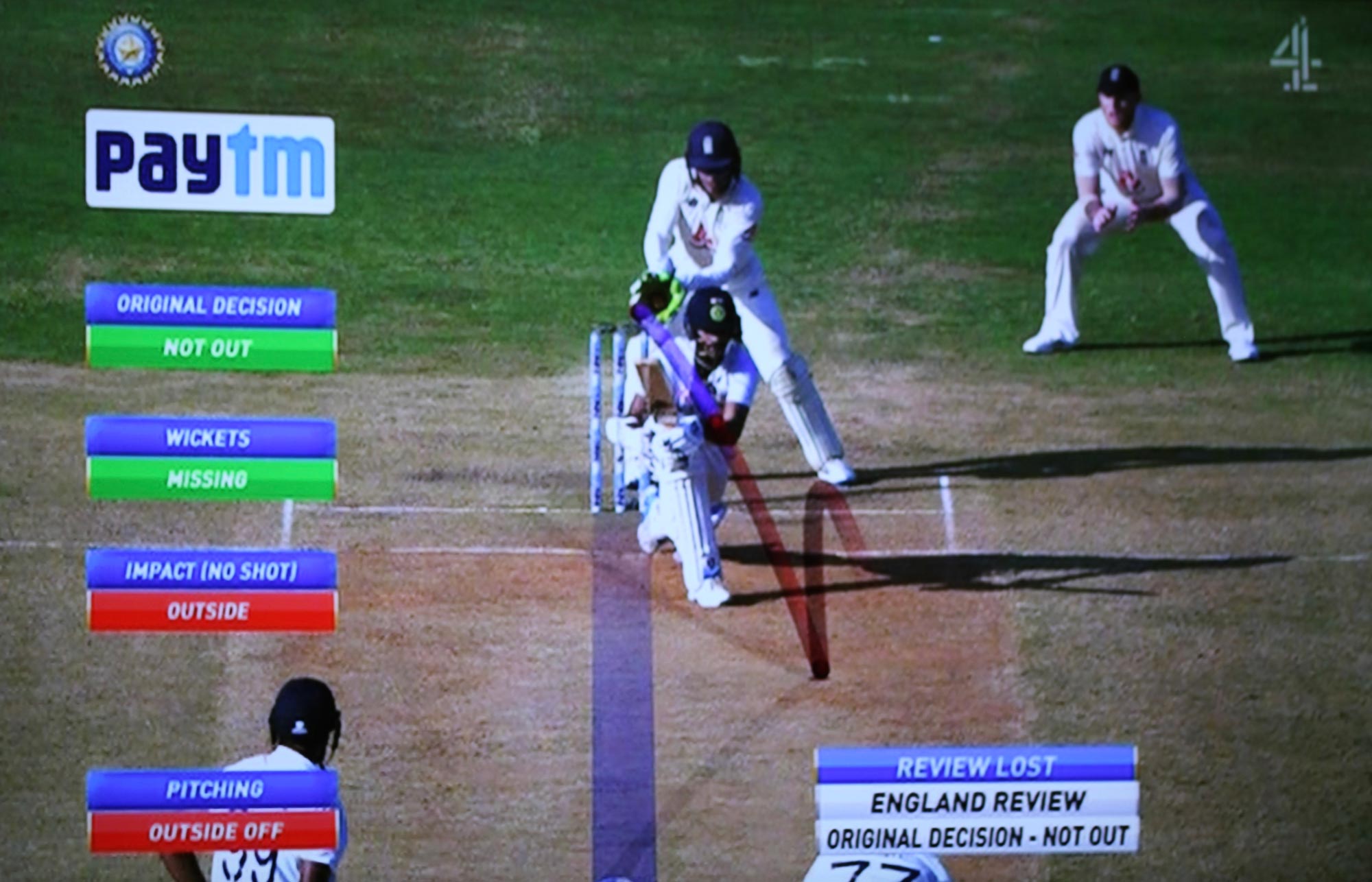
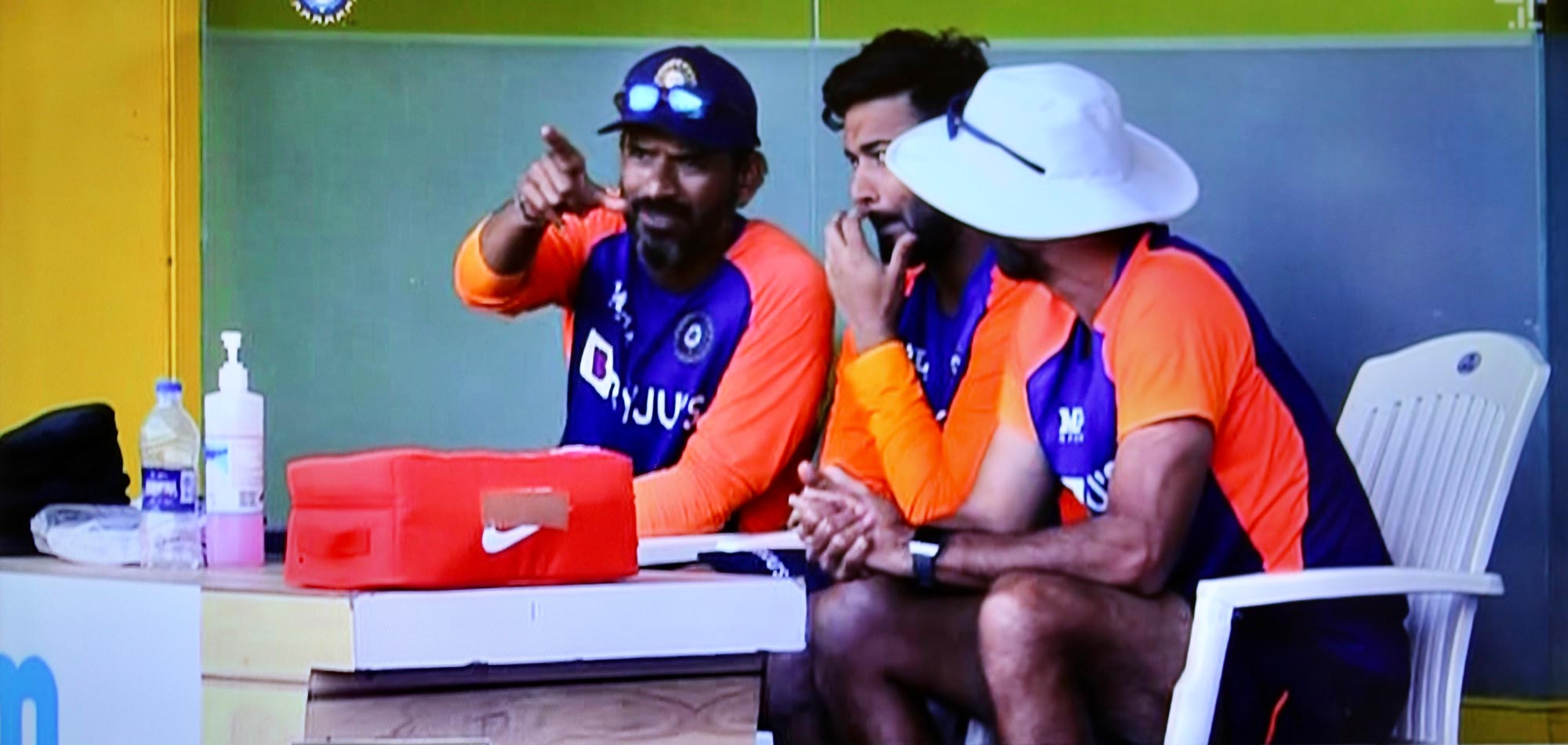
I know nothing about cricket, so reading your post this evening was quite an education – thank you, Derrick!
Also inspiring are your photos – did you take them with a very fast shutter speed? They seem very high quality for a photo of a tv screen; even though the game of cricket may not move as fast as some others!
I never take the camera off automatic. In the old days I knew how to manage such things as shutter speeds, etc. Now it is all too much for me to get my head around. Thanks very much, Emma.
Thanks very much, Emma.
Your photos, and Jackie’s, are wonderful. I just have a little, old iPhone which I’m really hoping to be able to upgrade next year. But I do so admire images taken with a ‘proper’ lens – particularly very close, or long distance shots.
Thanks again
Great 1st innings by England Derrick, Root is the best batsman on the planet at the moment.
Agreed, John. Thanks very much.
You’re welcome mate
Cricket explained! I think I understand at least a little.
That was the aim, Laurie. Much appreciated.
There is something very special and nostalgic about Cricket Whites.
I agree.
Those photos from the tv are really rather good. Looking forward to your rugby explanation tomorrow.
I’m pleased. Thanks very much, Sheree
Pleasure Derrick
I’m just starting to prepare my dinner and wish I had been at yours. I’d take some of that sauv blanc along with it as well.
Thanks very much, Lisa. I’m sure yours was as good.
I’ve never understood cricket. Thank you for explaining the fine points of the game! (I particuarly like the long shadows photos.)
Thanks very much, Liz. It was seeing the potential for those that made me get my camera out.
A very well chosen and presented set of pictures. Cricket has never been more exciting.
Thank you very much, Tootlepedal. Appreciated from one who knows.
A different kind of day
Indeed. Thanks very much, Ribana
I love cricket. I had it explained to me in 1983 and have been a fan ever since.
I’m pleased, Peggy. Good to know. Thanks a lot.
Joe Root not too bad for a Yorkshire Lad.
Not at all. Thanks a lot, Gary
like emma said, i don’t know much about Cricket and so this was informative – and nice job on the screen shot photos –
Thanks very much, Yvette.
After reading your description of the game, I still have one question: is the game the source of the phrase, “a sticky wicket”?
It is indeed, Linda. Meaning difficult to bat on. Thanks very much.
Cricket is complicated, and yet you have scored a straight ‘A’ explaining the game, meticulously gleaning and cropping the images from the television for illustrating the points. It will need a lot of watching before the game can be truly understood though. Even I have lost track of the plethora of newfangled rules introduced and tweaked in the wake shorter and shorter formats of the game. The one thing that I have not been able to wrap around my brain till date is the Duckworth-Lewis Method although it was introduced circa 1990.
Chennai was earlier known as Madras, and was an important port town in the colonial era. The picture where the shadows of the players are significantly taller than the players is the most creative capture, reminiscent of the famous National Geographic image in which the tall camels are actually the shadows of the pinpoints that the camels are.
Thank you for your knowledgable comments, Uma. I hadn’t known that Chennai was once Madras, I haven’t seen Chicken Chennai in a restaurant yet
I can’t blame you for that. Chennai is home to one of India’s top technological institutes and they still call themselves IIT Madras.
I don’t think I have ever watched a cricket match. Excellent set of photos and explanation, Derrick!
Thanks very much, Lavinia
Great photos…love the action shots! You are the first person to ever teach me about cricket…I’ve learned from your blog posts.




Your wonderfully descriptive describing words of Jackie’s amazing cheffery make me drool!
I’ll go now and wipe my chinny chin chin!
(((HUGS)))
Thank you so much, Carolyn X
I loved the picture of the wicketkeeper and the fielder whispering behind him.
Thanks a lot, John. I liked that, too.
I like all forms of cricket, even 20/20 but nothing can compare with Test Cricket. Probably the finest team game in the World. Spoilt a bit today by egos and tattoos.
I once tried to explain cricket to a French friend. I failed of course.
I like this from Bill Bryson…
“It is not true that the English invented cricket as a way of making all other human endeavours look interesting and lively; that was merely an unintended side effect. …It is the only sport that incorporates meal breaks. It is the only sport that shares its name with an insect. It is the only sport in which spectators burn as many calories as the players-more if they are moderately restless.”
Thanks a lot, Andrew. The ebb and flow of Test Cricket over time does it for me
Absolutely. I remember school holidays watching the test match on BBC in black and white and keeping a scorecard for my dad when he came home from work. I always hated Wimbledon fortnight and those dreaded words ” We are leaving Trent Bridge for now and returning you to Centre Court”
Agreed.
You have also reminded me of this…
You have two sides, one out in the field and one in. Each man that’s in the side that’s in goes out, and when he’s out he comes in and the next man goes in until he’s out. When they are all out, the side that’s out comes in and the side that’s been in goes out and tries to get those coming in, out. Sometimes you get men still in and not out.
When a man goes out to go in, the men who are out try to get him out, and when he is out he goes in and the next man in goes out and goes in. There are two men called umpires who stay all out all the time and they decide when the men who are in are out.
When both sides have been in and all the men have been out and both sides have been out twice after all the men have been in, including those who are not out, that is the end of the game!
And with that, the entire game is clear to me…
Absolutely, that clears it up I think!
Thanks for the photos and explanation, Derrick.
Thanks very much, to you, too, Jill
You got some wonderful photos from the TV screen. I like the long shadows and some of those action shots.
Thank you very much, Merril. It was the shadows that decided me to try the photographs
Well done!
:0
An interesting post for someone the subject is foreign to.
Thanks very much, Mrs W,
We were just talking about cricket last night as we were tuning into the Super Bowl. I didn’t know much about the game – thanks for explaining and sharing these pictures.
Thanks very much, Barbara. Likewise about Super Bowl
The Super Bowl was a pretty dull game this year, to be honest. Should have watched cricket!
Learning to play cricket was part of my growing up years. Since leaving Guyana in 1987, I’ve lost touch with the game and news of the West Indies Cricket Team.
Thanks very much, Rosaliene
Thank you for the only lucid explanation of cricket I have heard in my life, Derrick. I am looking forward to an explanation of rugby.
Thank you so much, Dolly.
The pleasure, is mine, Derrick.
You did a great job catching those shots Derrick. Hubby loves test cricket, I prefer to watch the seagulls. Though I must say I do love hearing the commentary without actually listening, to me it is one of the sounds of summer.
Thanks very much, Lindsey. It is, indeed.
Cricket is the cause of a great divide in the family – my brothers-in-law are devotees of the Test game, with slowly crafted innings, grace and lazy summer days spent watching. I prefer IPL. Lots of cheering, loads of runs and plenty of time in a day to watch cricket and do other things.
Shame on you, Quercus. But thanks anyway
I agree
I’ve not noticed batsmen wearing a face guard before. Certainly not my ex-husband (a professional cricketer). But then I haven’t made a point of watching him play cricket for quite some considerable time.
Thanks very much, Helen. This is what life was like without helmets: https://derrickjknight.com/2012/06/17/six-leg-byes/
Well, I’m glad both you and Len were okay. I can see how important helmets are!
Len never played again although he was physically OK
It must have been a shock!
I think so.
Thank you for the explanation with photos, Derrick. I’ve never had someone explain it to me before.
And thank you, Crystal. At least I conveyed the basics.
I used to watch the cricket with my Dad when I was a teenager, but I seem to remember he thought I asked too many questions. I was a Bob Willis fan. I once tried to explain it to an American man who asked and as I was explaining, it seemed a very strange idea. Lasting for five days, for example and often getting rained off so it ended as a draw. But perhaps I misremember. I gradually stopped watching when it came off the BBC.
Your memory seems fair enough, Susan. Bob Willis frequented my favourite restaurant – the Akash, in Edgeware Road. It was so small I don’t know how he got in there. Thanks very much
I’m not mush of a sports fan so I was almost skip looking the post, but the elongated shadows of the players create interesting atmosphere there kept my eyes.
Thank you very much, Byung. It was the shadows that prompted me to take the pictures and create the post.
I Know so, Derrick.